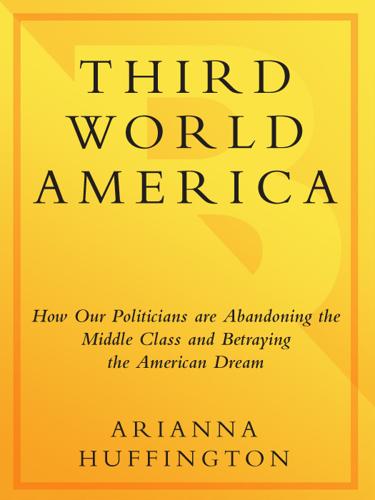
Third World America: How Our Politicians Are Abandoning the Middle Class and Betraying the American Dream
by
Arianna Huffington
Published 7 Sep 2010
PART 3: AMERICA THE BEAUTIFUL DILAPIDATED 1 George Washington knew that: Robert Fishman, “Beyond Motor City, 1808–1908–2008: National Planning for America,” 23 Jan. 2010, www.america2050.org. 2 The nation’s overall infrastructure grade: American Society of Civil Engineers, 2009 Report Card for America’s Infrastructure, www.infrastructurereportcard.org. 3 downward trend since 2005: American Society of Civil Engineers, 2005 Report Card for America’s Infrastructure, www.asce.org. 4 “It’s the kind of report card you …”: Katherine Harmon, “U.S. Infrastructure Crumbling,” 28 Jan. 2009, www.scientificamerican.com. 5 According to the ASCE: American Society of Civil Engineers, 2009 Report Card for America’s Infrastructure, www.infrastructurereportcard.org. 6 But we’ve only budgeted $975 billion: Ibid. 7 America’s population is expected to reach: Jeffrey Passel and D’Vera Cohn, “Immigration to Play Lead Role in Future U.S.
…
Water and Sewer Systems Would Be Costly,” 14 Mar. 2010, www.nytimes.com. 33 Washington, D.C., averages a water line break: Ibid. 34 “We have about two million miles of pipe …”: “Liquid Assets: The Story of Our Water Infrastructure,” 19 Oct. 2009, www.infrastructureusa.org. 35 Even now, our tap water is becoming: Testimony of Judy Treml, House Committee on Transportation and Infrastructure, 15 Oct. 2009, www.transportation.house.gov. 36 “Older systems are plagued by chronic overflows …”: American Society of Civil Engineers, “America’s Infrastructure Report Card Fact Sheet: Wastewater,” 2009, www.infrastructurereportcard.org. 37 While demand for electricity has risen: Thomas J. Donohue, “Rebuilding America—the Time Is Now,” U.S. Chamber of Commerce, 10 Aug. 2007, www.uschamber.com. 38 Since we need all the power: American Society of Civil Engineers, “America’s Infrastructure Report Card Fact Sheet: Energy,” 2009, www.infrastructurereportcard.org. 39 These ongoing brownouts and blackouts: U.S.
…
2 Aug. 2007, http://minnesota.publicradio.org. 73 On March 16, 2006, the Ka Loko Dam in Kilauea, Hawaii: Craig Gima, “Ka Loko Settlement Is Reached,” 30 Oct. 2009, www.starbulletin.com. 74 The breach created an ecological disaster: Diane Leone, “State Keeps Eye on Dams,” 16 Mar. 2006, www.starbulletin.com. 75 According to Hawaii congresswoman Mazie Hirono, it was not: Joint Hearing on National Levee and Dam Safety Programs, House Committee on Transportation and Infrastructure, 8 May 2007. 76 There are more than 85,000 dams in America: American Society of Civil Engineers, 2009 Report Card for America’s Infrastructure, www.infrastructurereportcard.org. 77 It would take $12.5 billion over the next five years: Ibid. 78 Plus, of our 85,000 dams, the federal government regulates: Ibid. 79 In 2007, during congressional testimony: Joint Hearing on National Levee and Dam Safety Programs, House Committee on Transportation and Infrastructure, 8 May 2007. 80 Like any number of agencies charged with protecting: Harry Shearer, “Fixing the Responder, Ignoring the Cause,” 25 Nov. 2008, www.huffingtonpost.com. 81 Instead of fulfilling its responsibility to build: Harry Shearer, “New Orleans: Where Accountability Failed, Liability Follows,” 19 Nov. 2009, www.huffingtonpost.com. 82 The American Society of Civil Engineers estimates: American Society of Civil Engineers, 2009 Report Card for America’s Infrastructure, infrastructurereportcard.org. 83 Over the next ten years, there will be a five-hundredfold: “Fixing America’s Crumbling Infrastructure,” Free Enterprise: News and Views from the U.S. Chamber of Commerce, Jul. 2008, www.uschambermagazine.com. 84 Federal Communications Commission chair Julius Genachowski explains: “National Broadband Plan: Consumer Survey Results Are In,” 23 Feb. 2010, www.brookings.edu. 85 In a study of 120 countries, researchers found: Iain Morris, “Resilience Amid Turmoil: Benchmarking IT Industry Competitiveness 2009,” Sept. 2009, www.economist.com. 86 Even a farmer these days needs high-speed Internet: “National Broadband Plan: Consumer Survey Results Are In,” 23 Feb. 2010, www.brookings.edu. 87 In 2001, the United States ranked fourth among: Jerome Cukier, “Internet Penetration—Who’s Online?”
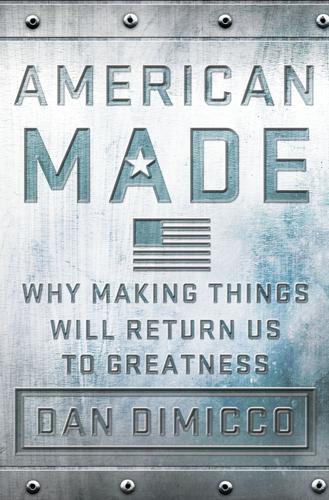
American Made: Why Making Things Will Return Us to Greatness
by
Dan Dimicco
Published 3 Mar 2015
Gerry Smith, “Internet Speed in United States Lags behind Many Countries, Highlighting Global Digital Divide,” Huffington Post, September 10, 2012, http://www.huffingtonpost.com/2012/09/05/internet-speed-united-states-digital-divide_n_1855054.html. 14. “2013 Report Card for America’s Infrastructure,” American Society of Civil Engineers, March 19, 2013, http://www.infrastructurereportcard.org/. 15. “Failure to Act: The Impact of Current Infrastructure Investment on America’s Economic Future,” American Society of Civil Engineers, January 15, 2013, http://www.asce.org/uploadedFiles/Infrastructure/Failure_to_Act/Failure_to_Act_Report.pdf. 16. “2013 Report Card for America’s Infrastructure,” American Society of Civil Engineers, March 19, 2013, http://www.infrastructurereportcard.org/. 17.
…
Ross DeVol and Perry Wong, “Jobs for America: Investment and Policies for Economic Growth and Competitiveness,” Milken Institute, January 2010, http://assets1c.milkeninstitute.org/assets/Publication/ResearchReport/PDF/JFAFullReport.pdf. 17. “2009 Infrastructure Report Card,” American Society of Civil Engineers, January 28, 2009, http://www.infrastructurereportcard.org/2009/sites/default/files/RC2009_full_report.pdf. 18. Ibid.; “Failure to Act: The Economic Impact of Current Investment Trends in Water and Waste Treatment Infrastructure,” American Society of Civil Engineers, December 15, 2011, http://www.asce.org/Infrastructure/Failure-to-Act/Water-and-Wastewater/. 19. “2009 Infrastructure Report Card,” American Society of Civil Engineers; Proprietary Analysis by Garten Rothkopf. 20. FAA NextGen 2012 Implementation Report, http://www.faa.gov/nextgen/media/executive_summary_2012.pdf. 21. “2009 Infrastructure Report Card.” 22.
…
And by the way, once we do that, the benefits extend to the whole world, not just the United States, because foreign investors will be more likely to put their money into a country that offers an excellent infrastructure and the rule of law, enforceable contracts, robust protections for intellectual and private property, and capitalism rightly understood. But as long as we’re in this funk, we’re not helping the world and we’re sure as hell not helping ourselves. How to Think About Government Spending The American Society of Civil Engineers estimates the United States would need to invest $3.6 trillion in new infrastructure spending by 2020 in order raise the nation’s bridges, roads, dams, waterways, and levees to a “B” grade. Currently, the ASCE gives U.S. infrastructure a “D+” grade overall.14 But there is little movement in Washington, D.C., or in the states to provide additional funding for infrastructure improvements.
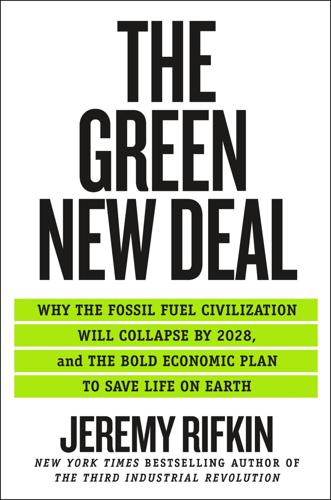
The Green New Deal: Why the Fossil Fuel Civilization Will Collapse by 2028, and the Bold Economic Plan to Save Life on Earth
by
Jeremy Rifkin
Published 9 Sep 2019
Frank Newport, “Trump Family Leave, Infrastructure Proposals Widely Popular,” Gallup, April 7, 2017, https://news.gallup.com/poll/207905/trump-family-leave-infrastructure-proposals-widely-popular.aspx (accessed February 4, 2019). 14. American Society of Civil Engineers, The 2017 Infrastructure Report Card: A Comprehensive Assessment of America’s Infrastructure, https://www.infrastructurereportcard.org/wp-content/uploads/2017/01/2017-Infrastructure-Report-Card.pdf (accessed March 12, 2019), 5–7. 15. American Society of Civil Engineers, Failure to Act: Closing the Infrastructure Investment Gap for America’s Economic Future, 2016, https://www.infrastructurereportcard.org/wp-content/uploads/2016/05/ASCE-Failure-to-Act-Report-for-Web-5.23.16.pdf (accessed March 12, 2019), 4–6. 16.
…
By contrast, everywhere we look across America today, the public infrastructure is in dire straits and disrepair: roads, bridges, dams, public schools, hospitals, public transit, etc. Every four years, the American Society of Civil Engineers (ASCE) issues a report card on the condition of the country’s infrastructure, including its rail transit, inland waterways, levees, ports, schools, wastewater and solid waste treatment, hazardous waste disposal, parks, aviation, and energy. In its 2017 report card, the ASCE gave the nation’s public infrastructure an embarrassingly low score of D+. Noting that the deteriorating public infrastructure is becoming a drag on the American economy and a growing threat to the health, well-being, and security of the nation, the ASCE report warns that the country is only paying half of America’s infrastructure bill, leaving an investment funding gap that hurts businesses, workers, and families.14 This means poor roads and more travel time, collapsed bridges, airport delays, aging electricity grids and power shortages, unreliable water distribution systems, the breakdown of sewer systems and a host of other public services, all of which “translate into higher costs for businesses to manufacture and distribute goods and services.”
…
Emmie Martin, “Warren Buffett and Bill Gates Agree That the Rich Should Pay Higher Taxes—Here’s What They Suggest,” CNBC, February 26, 2019, https://www.cnbc.com/2019/02/25/warren-buffett-and-bill-gates-the-rich-should-pay-higher-taxes.html (accessed March 1, 2019). 26. American Society of Civil Engineers, The 2017 Infrastructure Report Card: A Comprehensive Assessment of America’s Infrastructure, https://www.infrastructurereportcard.org/wp-content/uploads/2017/01/2017-Infrastructure-Report-Card.pdf (accessed March 12, 2019), 7. 27. Adam B. Smith, “2017 U.S. Billion-Dollar Weather and Climate Disasters: A Historic Year in Context,” NOAA, January 8, 2018, https://www.climate.gov/news-features/blogs/beyond-data/2017-us-billion-dollar-weather-and-climate-disasters-historic-year (accessed February 27, 2019). 28.

Street Smart: The Rise of Cities and the Fall of Cars
by
Samuel I. Schwartz
Published 17 Aug 2015
See Americans for Prosperity African Americans, 214–219 Agenda 21, 226 America Walks, 93 American Association of Highway and Transportation Officials, 119 American Association of State Highway Officials (AASHO), 18 American Automobile Association (AAA), 3–4, 73, 106–107, 107–108 American Public Transportation Association (APTA), 193–194 American Society of Civil Engineers (ASCE), 16, 228, 229 report card on roads, 206–208 American Transit Association, 9n Americans for Prosperity (AFP), 226 Ameruso, Anthony, 53, 54, 108 Apple, 235n Appleyard, Bruce, 100–101 Appleyard, Donald, 99–100 Apps, mobile transport. See Mobile transport apps and devices APTA. See American Public Transportation Association Aronwold, George, 54 Arroyo Seco Parkway, 15 Articles of Confederation, 14–15 ASCE. See American Society of Civil Engineers Asserson, Arthur, 55 Association of Realtors, 84 ATIS (advanced traveler information systems), 184–185 Atlanta, Georgia, 218–219, 230–231 Attractors, 163–164, 166 Autobahn, 15, 15n, 16 Automobiles.
…
As cities grew, so did peak demand, and, for a long time, the only way to satisfy that demand was by increasing capacity: More (or wider) roads and rails. More over-engineering. Lots of people have heard of the “Report Card” on America’s infrastructure prepared annually by the American Society of Civil Engineers. (Full disclosure: I’m not only a member of the society but have served on the New York Committee on America’s Infrastructure, which is responsible for assigning grades.) The Report Card gives a grade to sixteen different categories of America’s infrastructure, from aviation to ports to schools to inland waterways, and if you’ve heard of it at all, you probably know that our overall GPA is currently a pretty pathetic D+.
…
Even if the price of oil doesn’t distort investment decisions, it’s not as if we were making the most efficient decisions on infrastructure before. Though there is actually a lot to recommend in the American Society of Civil Engineers’ analysis of the sorry state of all aspects of the country’s infrastructure—we really do need to upgrade our waste-water treatment plants and our internal waterways—the Report Card makes some serious errors in urging greater investment in big parts of the transportation system. Spending hundreds of billions of dollars on expanding and restoring roads when Americans are driving fewer miles each year is a very expensive exercise in nostalgia, one that could easily turn our fifty-year-long mistake into one lasting decades longer.

A Generation of Sociopaths: How the Baby Boomers Betrayed America
by
Bruce Cannon Gibney
Published 7 Mar 2017
“Joe Biden Says NYC Airport Like ‘Some 3rd-World Country.’” Time, 7 Feb. 2014. 6. American Society of Civil Engineers. Infrastructure Report Card, 2013, pp. 11–12. Like all rigorous analyses, ASCE’s methodology and assessments have changed somewhat over time, but the grades across time are clearly designed to be comparative. 7. Ibid., p. 67. 8. Ibid. 9. Ibid.; see also “About the Report Card: Methodology.” www.infrastructurereportcard.org/a/#p/about-the-report-card/methodology. 10. American Society of Civil Engineers. Infrastructure Report Card, pp. 65–67; author’s calculations. 11. Bivens, Josh. “The Short-and Long-Term Impacts of Infrastructure Investments on U.S.
…
Railway-technology.com, 29 Aug. 2013, www.railway-technology.com/features/feature-top-ten-fastest-trains-in-the-world. 34. American Society of Civil Engineers. Infrastructure Report Card, 2013, p. 67. 35. Fandos, Nicholas. “Lengthy Shutdowns in Washington, D.C. Metro System Are Possible.” New York Times, 30 Mar. 2016, www.nytimes.com/2016/03/31/us/lengthy-shutdowns-in-washington-dc-metro-system-are-possible.html. 36. American Society of Civil Engineers. Infrastructure Report Card, 2013, p. 67. 37. US Government Accountability Office. “Commercial Nuclear Waste: Effects of a Termination of the Yucca Mountain Repository Program and Lessons Learned.”
…
The grade then was a C, indicating conditions “fair to good… requir[ing] attention.”6 Unfortunately, matters required more than just “attention,” they required a nonsociopathic political class. It did not help that Congress failed to revisit its 1988 report, leaving assessments to industry groups like the American Society of Civil Engineers (ASCE).* ASCE’s independent reports, compiled as the Infrastructure Report Cards, concluded that conditions had deteriorated to a D by 1998.7 If GenX parents received a similar report card regarding their children, the whole war machine of upper-middle-class Helicopter Fathering and Tiger Mothering would swing into action: money, tutors, apocalyptic lectures, pedagogical investigations, and marches on the PTA.
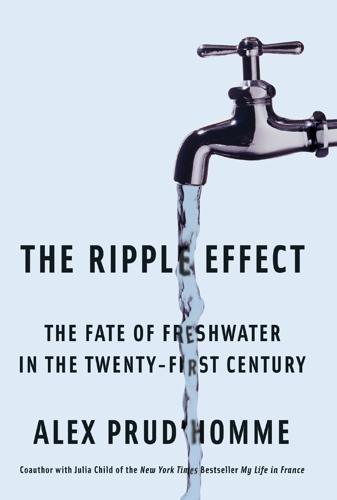
The Ripple Effect: The Fate of Fresh Water in the Twenty-First Century
by
Alex Prud'Homme
Published 6 Jun 2011
CHAPTER 20: FORENSIC ENGINEERING 215 Federal Emergency Management Agency (FEMA): Mark Schlefstein, “Levee statistics point up their importance to nation’s economy,” New Orleans Times-Picayune, January 2, 2010. 215 85 percent of US levees were privately built: “The Report Card on America’s Infrastructure,” American Society of Civil Engineers, 2010. 215 177 of them—about 9 percent of federally inspected levees: Ibid. 216 the residents of Fernley, Nevada: Steve Friess, “Rush of Water Leaves a Nevada Town in Anguish,” New York Times, January 7, 2008. 216 Report Card on American Infrastructure: American Society of Civil Engineers: http://www.infrastructurereportcard.org/. 216 Congress had committed only $1.13 billion: Ibid. 216 In the 2006 Rapanos case: John M.
…
CHAPTER 11: WATER SCARCITY 107 Tunnel No. 3: New York City Department of Environmental Protection: http://www.nyc.gov/html/dep/pdf/factsheet.pdf and http://www.nyc.gov/html/dep/html/ dep_projects/cp_city_water_tunnel3.shtml. 107 Ted Dowey: Author’s tour of Tunnel No. 3 with Ted Dowey, March 5, 2007. 119 The American Society of Civil Engineers: “Report Card for America’s Infrastructure,” American Society of Civil Engineers: http://apps.asce.org/reportcard/2009/grades.cfm. 120 In 2007, 159 leaks: Anthony DePalma, “Mysterious Leak Provides Hint of Lost Manhattan,” New York Times, February 5, 2008. 120 The EPA estimates that 1 trillion gallons: US Environmental Protection Agency, Water Sense, “The Facts on Leaks,” http://www.epa.gov/WaterSense/pubs/fixleak.html. 120 the water pressure inside: From David Grann’s indispensable article on Tunnel No. 3, “City of Water,” New Yorker, September 1, 2003. 122 Standard pay is $35 to $38 an hour: Ibid. 122 Hogs have their own language: Ibid., and Dowey interview.
…
The city’s drinking supply has had a higher profile under Mayor Michael Bloomberg, but much of the system suffers from years of underinvestment and deferred maintenance, and the DEP faces a growing list of problems: infirm dams and seeping water tunnels, sewage overflows and industrial water pollution, pressure from development and gas drilling in the watershed, tension between rural communities and the city over control of water, competition with neighboring states for future drinking supplies, and worries about the impact of climate change on water quality and quantity. Aging infrastructure is a growing problem nationwide, but the decline has occurred largely out of sight, both literally and figuratively. The American Society of Civil Engineers (ASCE), the nation’s oldest engineering society, has reported that much of the nation’s hydro-infrastructure is on the verge of failure. In its 2009 Report Card, ASCE gave the nation’s infrastructure a D, or “Poor,” grade, and waterworks earned some of the worst grades of all: the nation’s dams were given a D, while drinking water, wastewater treatment plants, inland waterways, and levees all received grades of D-minus, meaning they are dangerously compromised.
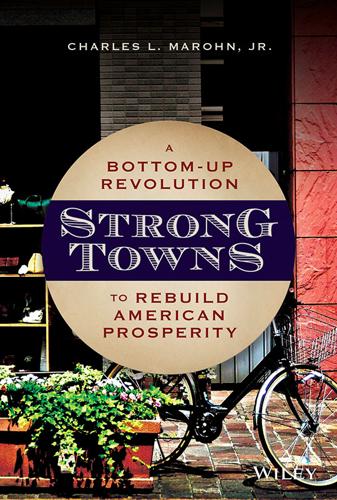
Strong Towns: A Bottom-Up Revolution to Rebuild American Prosperity
by
Charles L. Marohn, Jr.
Published 24 Sep 2019
A cult is a collection of people having a misplaced or excessive admiration for a person or thing. Since the end of World War II, America’s leadership class has grown to be an infrastructure cult. The American Society of Civil Engineers The American Society of Civil Engineers (ASCE) is the most authoritative, prestigious, and oft-quoted organization on North American infrastructure spending. Their periodic report cards routinely score U.S. infrastructure at just above failing. With the enthusiastic support of contractors, developers, trade unions, and others involved in the business of construction, the ASCE regularly calls for large increases in all levels of infrastructure spending.
…
That’s $2.2 trillion in additional infrastructure spending over the coming decade. Let me summarize what you’ve just read: The American Society of Civil Engineers suggests that the federal government, on behalf of the American people, spend $2.2 trillion over a decade to save those same Americans from the hardship of having distressed infrastructure, a difficulty estimated to cost just $1 trillion. How can a prestigious organization like the American Society of Civil Engineers write something that seems so nonsensical? Spend $2.2 trillion to save $1 trillion? That’s preposterous! The answer is simple: They don’t consider it nonsense.
…
Chuck and his wife live with their two daughters in their hometown of Brainerd, Minnesota. Index A Accounting, for infrastructure, 70–71 Acre, value per, 135, 138–142 Alexander, Christopher, 8 Altruism, in community living, 6–7, 26 American Society of Civil Engineers (ASCE), 65–67 Amish society, 217 Anderson, Monte, 160–161 Antifragile (Taleb), 193 Anti-fragile systems, 4, 6 Appreciation, for maintenance staff, 180–183 Arnade, Chris, 214–215 ASCE (American Society of Civil Engineers), 65–67 Assessment process, 77 Automobile reliance: development based on, 27–30 and modern city development, 111–112 productivity and, 140 B Barbell investment approach, 148–150, 150f Better Block Foundation, 159 Bezos, Jeff, 102 Bias, confirmation, 69, 74, 183–186 Bicycles, 112 Big box stores: alternative uses of sites of, 169 productivity for, 136–137 Big project mentality, 184–186 The Big Sort (Bishop), 207–208 “Bipartisan Placemaking: Reaching Conservatives” panel, 210 Bishop, Bill, 207–208 The Black Swan (Taleb), 59, 120 Blighted areas, productivity of, 131–134, 140 Boise State University, 126 Boys & Girls Club of Santa Ana, x Brainerd, Minnesota, 16f, 18f development of infrastructure in, 30–31 experimental development pattern in, 125–126 founding and development of, 16–17 productivity at downtown vs. edge of town, 134–138 traditional vs. modern development in, 131–134 Bretton Woods agreement, 90 Brooklyn, New York, 213–214 Brown, Aaron, 211 Brown, Michael, 114 Budgeting, by cities, 50–57 Building code deficiencies, addressing, 194 Buildings, complex vs. complicated, 20–23 Bureaucracy, 172 Burnham, Daniel, 122 Bush, George W., 209 C California, government decision making in, 197–198 Capital investments, return on, 171–172 Carbon-reduction benefits, 74 Carlson, Curtis, 121 “Carlson's Law,” 121 Cash flow: and debt, 98, 187–192, 188f–190f over life cycle of development project, 52–57, 55f, 56f CBO (Congressional Budget Office), 78–80 Centralization, 198 Chaos, order vs., 121–122 Chicken problem, 195 Cities, 37–62 abandonment of, 109–110 accounting for infrastructure by, 70–71 budgeting and growth in, 50–57 contracting of, 154 Detroit, Michigan, 60–62 development of Pompeii, Italy, 5–10 economic stability of modern, 104–106 engineer's view of, 11 experimental development pattern in, 126–127 filling gaps in, 160–163 and illusion of wealth, 57–60 incremental growth in founding of, 15–20 as infinite game, 38–41 and infrastructure, 44–50 maintenance required for infrastructure in, 115 modern development of, 12 revenues and expenses, 41–44 traditional vs. modern development of, 1–3 Cities and the Wealth of a Nation (Jacobs), 101–102 City Council of Santa Ana, ix, x City engineer, 177t City halls, 43–44 City planner, 177t Class: and neighborhoods, 21–22 and re-urbanization, 116 Clinton, Bill, 209 Clinton, Hillary, 63 Cognitive Architecture (Sussman and Hollander), 8 Cognitive discounting, 65 Collaboration, between government officials and citizens, 195–197 Commers, Jon, 45 Common infrastructure, 130 Community living, 199–218 differing opinions in, 206–212 and extended family, 200–201 as infinite game, 39–40 meaning in, 212–218 in neighborhoods, 202–203 in Pompeii, Italy, 6–7 walking in, 203–206 Complex, adaptive systems: human habitats as, 3–4 and incremental growth, 168 incremental growth of, 15–16, 18–19 rational decision making with, 120–123 Complex buildings, 20–23 Complicated buildings, 20–23 Complicated systems, 11–14 Confirmation bias, 69, 74, 183–186 Conflicts, dealing with, 206–212 Congress for the New Urbanism, 210 Congressional Budget Office (CBO), 78–80 Constraints: and economic stability, 93–96 and gold standard, 90 growth as, 100 prudent, for investments, 164–168 removal of, in modern world, 59–60, 96 Construction costs, 136–137 Consumption, 215–216 Costa Rica, 126–127 The Crash Course (Martenson), 108 Critical systems, 182–183 Cross-generational civic collaboration, 187 D Dallas, Texas, 159 Darwin, Charles, 8 The Death and Life of Great American Cities (Jacobs), 8 Debt: and cash flow, 98 for federal government, 186 for government, 96–100 for local government, 113–114 for place-oriented government, 186–192 for projects with quality-of-life benefits, 187 for state government, 113–114 Debt to income ratio, 97 Decision making: rational, see Rational decision making subsidiarity in, 195–198 Default, on municipal debt, 191 Deneen, Patrick, 211 Density, as urban planning metric, 128–129 Depression economics, 86–89 Detroit, Michigan, 60–62 land values in, 24 renewal of urban, 117–119 Development projects: cash flow over life cycle of, 52–57, 53f, 55f, 56f decisions about failing, 115–120 Diamond, Jared, 58, 59, 84 Dig Deep, 211 Donjek, 45 Downtown, productivity of, 134–140, 139t, 143–144 Duany, Andres, 195 Duggan, Mike, 119 Duncanville, Texas, 160 E Economic development department, 178t Economics: and benefits of infrastructure spending, 72–73 in depressions, 86–89 Economic stability, 83–106 and auto-oriented development, 29–30 and constraints, 93–96 creating, 85–86 and depression economics, 86–89 and focus on growth, 100–102 following World War II, 89–91 and government debt, 96–100 growth vs. wealth, 102–104 of modern cities, 104–106 and post-war boom, 91–93 risk management strategies for, 83–85 Edges, 7–8 Edges of city: center vs., 28 city infrastructure necessary for, 115 productivity of, 134–138, 143–144 Efficiency, designing for, 174–176 Ehrenhalt, Alan, 116 Empire State Building (New York, New York), 129 Employment, in productive places, 133 England, 83 Expenses, and revenues, 41–44 Extended family, 200–201 F Failure, slow, 110–115 Failure to Act (ASCE report), 65–67 Family, extended, 200–201 Fannie Mae, 92 Farmers, risk management strategies of, 83–84 Federal Funds Rate, 97 Federal government: debt for, 186 impact of infrastructure on, 79 Federal Housing Administration (FHA), 89, 92 Federal Reserve, 99 Feedback, in local governments, 173–174 Ferguson, Missouri, 93, 114 FHA (Federal Housing Administration), 89 Financial status, local government's understanding of, 190–191 Finished states, neighborhoods built to, 21–23 “First ring” suburbs, 94 Form-based codes, 193–194 Fragile systems, 4 Franchises, productivity of, 133–134 Freddie Mac, 92 Future, predicting needs for, 19–20, 120–121 G Gaps, in cities, 160–163 Garcia, Anthony, 158 Gas tax, 75 Gawron, Stephen, 161 Gehl, Jan, 8 “General Theory of Walkability,” 206 Gentrification, of urban neighborhoods, 117 Goals, of individuals vs. communities, 40–41 Goland, Carol, 84 Gold reserves, 94 Gold standard, as basis for trade, 90 Government debt, 96–100 Government policies, prioritizing traffic, 29 Great Depression, 87–89, 191 The Great Inversion and the Future of the American City (Ehrenhalt), 116 Great Society, 93 Growth: economic stability and focus on, 100–102 in municipalities, 50–57 as objective of local governments, 176 wealth vs., 102–104 H Haidt, Jonathan, 208, 209, 215 Hardship, response to, 172–174 Hasidic Judaism, 213–214, 217 Hemingway, Ernest, 4 Henwood, Doug, 79 Hierarchies, in local government, 174–176 Highland neighborhood (Shreveport, Louisiana), 220 Highland Park (Shreveport, Louisiana), 220 High land values, 27–30 High Point, North Carolina, 161 Highway bypass corridor, 134–138 Hollander, Justin B., 8, 9 Homeless shelters, xi Homes, changing, 20 Hoover, Herbert, 87 Horizontal expansion, in California, 197 Housing: in California, 197–198 post-war changes in, 92 preference for single-family, 144–145 Housing authority, 178t How to Live in a World We Don't Understand (Taleb), 59 Human habitats, 1–14 as complex, adaptive systems, 3–4 in North America, 1–3 spooky wisdom in, 5–10 as systems that are complicated, 11–14 Hunter-gatherer existence, 58 Hurricane Katrina, 102–103 Hurricane Rita, 102–103 I Illusion of Wealth: and constant maintenance, 152 human response to, 57–60 Illusion of Wealth phase of development, 143 Improvement to Land (I/L) Ratio, 25, 25f, 117 Improvement value, 23–25, 25f Incentives, to fix problems, 113 Income taxes, 72 Incremental changes, implementing, 122–123, 156–157 Incremental growth, 15–35 and complex, adaptive systems, 168 complex vs. complicated buildings in, 20–23 constraints on, 164 and founding of cities, 15–20 good and bad development in, 34–35 and high land values, 27–30 and neighborhood renewal, 23–27 private and public investment in, 30–34 in traditional habitat development, 2 Infill projects, 160 Infrastructure, 63–81 accounting for, 70–71 and American Society of Civil Engineers, 65–67 calculating returns on investment for, 67–69 Congressional Budget Office on, 78–80 development of, 30–34 as investment, 41–42 in modern development, 32 and municipalities, 44–50 perception of need for more, 63–65 ratio of private to public investment in, 129–130 real return on investment, 74–78 secondary effects of, 72–74 Infrastructure Cult: development of, 65–67 paper returns calculated by, 69 Insolvency, 187–192 Interstate highway system, 92 Investment(s), 147–170 barbell investment approach, 148–150 capital, 171–172 conventional vs. strong towns thinking about, 185–186, 186t in filling gaps in cities, 160–163 impact of regulations on, 194 infrastructure as, 41–42 little bets, 150–160 low-risk investments with steady returns, 150–155 prudent constraints for, 164–168 public and private, 30–34, 31f, 32f returns on, see Return on investment in Suburban Retrofit, 168–169 Italy, walking in, 203–204 J Jacobs, Jane, 8, 101–102 Japan, 76 Jimmy's Pizza, 161–162 Job creation, 49, 72–73 Johnson, Neil, 12, 13 Junger, Sebastian, 216–217 K Keynes, John Maynard, 88 Keynesian economic policies, 88 Krugman, Paul, 63, 78 Kunstler, James, 110–111 L Lafayette, Louisiana, 101, 141–144, 151 Landau, Moshe, 213–214, 217 Land value: in declining suburbs, 113 and interstate highway project, 92 and neighborhood renewal, 23–25, 25f in neighborhoods with different types of properties, 165–167, 165f, 166f and suburban development, 27–30 Learning, from previous local investments, 187 Legacy programs, 173 Lifestyle choices, 202, 205–206 “Lifestyle enclaves,” 208 Little bets, 16–18, 150–160 Local economy: as basis for national economy, 101–102 national vs., 103 Local government: changes in, to maintain economic stability, 105–106 debt taken on by, 113–114 funded by state government, 95 impact of infrastructure on, 79–80 profit run by, 37–38, 147 relationship of state and, 198 Long declines, 110–115 “Long emergency,” 110–111 Long Recession of the 1870s, 77 Los Angeles, California, xi Lovable places, 10 Low-risk investments, with steady returns, 150–155 Lydon, Mike, 158 M Maintenance: ability to keep up with, 109 cash-flow debt to cover, 188–192, 188f–190f of development projects, 52–57 of infrastructure, 46–49 need for constant, 151–154 in place-oriented government, 180–183 required for single-family homes, 112 Maintenance department, 179t Manhattan, New York, 24 Martenson, Chris, 108 Meaning, life of, 212–218 Middle class, 92, 93, 144–145 Milan, Italy, 164 Mills Fleet Farm, 134–137 Minicozzi, Joseph, 138–140, 161 “Minnesota Miracle,” 95 Mixed-use neighborhoods, 163, 169 Modern city development: as high-risk investments, 149 as lead by pubic investment, 34–35 productive places in, 131–134 Modern Monetary Theory, 99 Mortgages, during Great Depression, 88–89 Mouzon, Steve, 10, 113 Muskegon, Michigan, 161 N National Association of Home Builders, 136 National economy, local vs., 103 Natural disasters, 102–103 Neighborhoods: abandonment of, 109–110 built to finished states, 21–23 changing in post-war era, 92–93 community living in, 202–203 decline of, 113 gentrification of urban, 117 mixed-use, 163, 169 renewal of, and incremental growth, 23–27 responses to improvements in, 158 structured around religions, 214 in transition sections of Detroit, 118 Neighbors, being involved with, 202–203 New Deal economics, 87–88 New Orleans, Louisiana, 102, 182 Nixon, Richard, 94 Noncritical systems, 182 O Oak Cliff neighborhood (Dallas, Texas), 159 Obama, Barack, 63 Obesity, among Pacific Islanders, 58–59 Options Real Estate, 160 Orange County, California, xi–xii Order, chaos vs., 121–122 The Original Green (Mouzon), 10, 113 Oroville dam (California), 182 Oswego, New York, 152 Oswego Renaissance Association, 152 P Pacific Islanders, 58–59, 183–185 Paper returns on investment, 67–69 Paradox of Avarice, 104 Paradox of Thrift, 88, 104 Pareidolia, 8–9, 9f Parks department, 178t Party analogy, 34–35 A Pattern Language (Alexander), 8 Pension funds, 56–57, 70, 98 Pequot Lakes, Minnesota, 44–46 Perception, of need for more infrastructure, 63–65 Personal preferences, 144–145 Peru, 84 Place-oriented government, 171–198 and confirmation bias, 183–186 designed for efficiency, 174–176 focus on broad wealth creation by, 176–180 maintenance as priority for, 180–183 and regulations, 192–194 response to hardship by, 172–174 subsidiarity in, 195–198 understanding of debt by, 186–192 Political differences, 207 Pompeii, Italy, 5–10 Post-war boom: and economic stability, 91–93 modern city development established in, 12 Power, subsidiarity principle and, 196–198 Prayer of Saint Francis, 218 Prioritization, of maintenance, 180–183 Private development, 40 Private investment: private to public investment ratio, 129–130 public and, 30–34, 31f, 32f Private sector (businesses): response to economic hardship in, 172–173 small, see Small businesses Problem solving, 13–14 Productive places, 125–146 downtown vs. edge of town, 134–138 in past, 125–127 and personal preferences, 144–145 productivity calculations for, 128–130 return on investment, 141–144 traditional vs. modern development in, 131–134 value per acre, 138–141 Productivity, calculations of, 128–130 Project teams, 179–180 Property taxes, 49 Property value, 23–25, 25f Public health, and walking neighborhoods, 205 Public investment: private and, 30–34, 31f, 32f private to public investment ratio, 129–130 returns required for, 147 Public safety department, 179t Q Quality-of-life benefits, 187 Quantitative Easing, 99 R Railroad companies, 77 Rational decision making, 107–123 about failing development systems, 115–120 about long declines, 110–115 within complex, adaptive system, 120–123 and lack of single solution, 107–110 Real return on investment, 74–78 Redevelopment, financial productivity after, 131–134, 139–140, 139t Redundant systems, 182 ReForm Shreveport, 219, 220 Regulations: from place-oriented government, 192–194 and subsidiarity principle, 195–198 Repealing regulations, 192–193 Republican Party, 209 Request for proposal (RFP), 50 Residents, learning concerns of, 156–157 Resources: assumption of abundance of, 12–14 wasted, in modern development, 19 Retreats, strategic, 108–109 Return on investment, 141–144 calculating, for infrastructure, 67–69 for capital projects, 171–172 in cities, 44 and debt taken on by local governments, 187 low-risk investments with steady, 150–155 paper, 67–69 real, 74–78 social, 78–79 Revenues, and expenses, 41–44 RFP (request for proposal), 50 The Righteous Mind (Haidt), 208 Risk management strategies, 83–85 Roaring Twenties, 87 Roberts, Jason, 159 Roosevelt, Franklin, 87, 88 Rotary International, 203 S St.

Visual Thinking: The Hidden Gifts of People Who Think in Pictures, Patterns, and Abstractions
by
Temple Grandin, Ph.d.
Published 11 Oct 2022
Infrastructure is falling apart, and there will not be enough skilled people to rebuild and repair it.” Dr. Burton’s predictions on the consequences of failing to maintain the infrastructure of our bridges and roads are now common knowledge. The American Society of Civil Engineers in 2021 released the following astonishing national averages: dams, D; bridges, C+; energy, D+. These are the worst report cards I’ve ever seen. Seven and a half percent of bridges in the United States are structurally deficient. You don’t have to be a structural engineer to see the problem. It’s visible to the naked eye. When I’m on the road, all over the country I can see steel reinforcing rods beneath the crumbling concrete of highway overpasses.
…
“Cal State Drops Intermediate Algebra as Requirement to Take Some College-Level Math Courses.” EdSource, 2017. https://edsource.org/2017/cal-state-drops-intermediate-algebra-requirement-allows-other-math-courses/585595. 3. WHERE ARE ALL THE CLEVER ENGINEERS? American Society of Civil Engineers. Infrastructure Report Card. ASCE, Reston, Virginia, 2017. Anthes, E. “Richard R. Ernst, Nobel Winner Who Paved the Way for the M.R.I., Dies at 87.” New York Times, June 16, 2021. Aspiritech.org. Chicago. Austin, R. D., and G. P. Pisano. “Neurodiversity as a Competitive Advantage.” Harvard Business Review, May–June 2017.
…
“What Is Consciousness in a Fly or a Worm? A Review of General Anesthesia in Different Animal Models.” Consciousness and Cognition (2016). doi.org/10.1016/j.concog.2016.06.017. Zentall, T. “Jealousy, Competition, or a Contextual Cue for Reward?” Animal Sentience 22, no. 4 (2018). AFTERWORD American Society of Civil Engineers. Report Card for America’s Infrastructure, 2021. https://infrastructurereportcard.org/catitem/bridges. Associated Press. “Review Slated for 5 Bridges Sharing Design of Collapsed Span.” February 2, 2022. Robertson, C., and S. Kasakove. “Pittsburgh Bridge Collapses Hours before Biden Infrastructure Visit.”
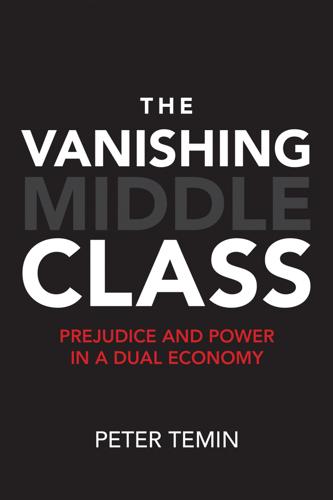
The Vanishing Middle Class: Prejudice and Power in a Dual Economy
by
Peter Temin
Published 17 Mar 2017
They began to get good education in the 1960s and 1970s, but opposition to the Civil Rights Movement has blocked and reversed these gains.13 Recent policies also have eroded the mobility of urban residents as they sought work or to get out of their local neighborhoods. The neglect of American infrastructure can be seen by looking at a few specific items such as bridges and mass transit. The American Society of Civil Engineers (ASCE) provides a “report card” for American infrastructure every five years, most recently in 2013. An advisory council of ASCE members assigns grades according to eight criteria. They noted that grades have been near failing as we start the twenty-first century, averaging only Ds, due to delayed maintenance and underinvestment across most categories.14 ASCE gave American bridges a C+ in 2013, a low grade for one of the world’s richest countries.
…
Allegretto, Sylvia, and Lawrence Mishel. 2016. “The Teacher Pay Gap Is Wider than Ever.” Economic Policy Institute, August 9. http://www.epi.org/publication/the-teacher-pay-gap-is-wider-than-ever-teachers-pay-continues-to-fall-further-behind-pay-of-comparable-workers. Accessed September 20, 2016. American Society of Civil Engineers. 2013. 2013 Report Card for American Infrastructure. http://www.infrastructurereportcard.org. Accessed September 20, 2016. Anderson, Carol. 2016. White Rage: The Unspoken Truth of Our Racial Divide. New York: Bloomsbury. Angrist, Joshua D., Parag A. Pathak, and Christopher R. Walters. 2013. “Explaining Charter School Effectiveness.”
…
Wilson 1996, 2009; Murray 2012. 10. MacDonald 1999; Swarns 2015. 11. Goffman 2014. 12. Chetty, Hendren, and Katz 2016; Chyn 2016; Wolfers 2016. 13. Heckman 1989. 14. The eight criteria are capacity, condition, funding, future need, operation and maintenance, public safety, resilience, and innovation. 15. American Society of Civil Engineers 2013. 16. Northeast Corridor Commission 2015; Fitzsimmons and Chen 2015. 17. Forsberg 2010; Zernike 2015a. 18. Scharfenberg 2015. Kanter (2015) proposes high-tech solutions to our transport problems, arguing implicitly that they will help the FTE sector as well as the low-wage sector.
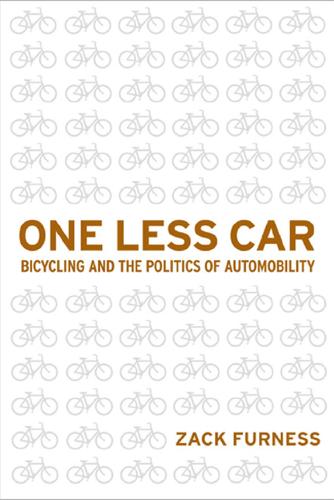
One Less Car: Bicycling and the Politics of Automobility
by
Zack Furness
and
Zachary Mooradian Furness
Published 28 Mar 2010
Coal energy might produce the bulk of U.S. carbon emissions and particulate matter (pollution), but it also provides most of the country’s power and is currently the subject of a massive re-branding campaign led by republicans and Democrats eager to tout the wholly fictitious process of burning “clean coal” with minimal environmental impact.11 Burning coal is, of course, simply the final task in a comprehensively energy-intensive and ecologically destructive process that includes blowing up mountains in appalachia and otherwise poisoning entire ecosystems and groundwater tables in and around coalmines, coal-fired power plants, and underground coal ash repositories.12 Even if we were able to blindly disregard these factors and somehow minimize the potentially catastrophic ecological damage implicit in a coal-fueled transportation system (i.e., electric cars), there is still the none too small matter of the country’s already strained electrical grid, which americans saw falter quite dramatically during massive blackouts in the summer of 2003.13 One does not require a degree in engineering to safely assume that this very infrastructure is totally incapable of supporting an additional 100 to 200 million electric cars’ worth of power on a daily basis. Though it is worth noting that people who do have such credentials, namely, the american Society of Civil Engineers, gave the U.S. energy infrastructure a “D” on its 2005 “national report Card,” downgrading it from its 2001 “D+.”14 My point here is quite simple: the automobile has no long-term future in the city. This is not to say that people are going to stop driving anytime soon, but even if the United States is capable of either (1) maintaining cheap oil prices indefinitely, (2) replacing and/or retrofitting more than 200 million U.S. vehicles with electric engines or biofuel modifications, or (3) revamping the entire energy grid in service of single-occupancy vehicles, there is simply no way to avoid the inevitable spatial limits of urban automobility since the U.S. population is expected to increase from roughly 300 million to 430 million by 2050 (the total urban population worldwide is expected to double from 3.3 billion to 6.4 billion in the same period).15 as norman Bel Geddes astutely pointed out in 1940: “The plain fact is that there is simply not enough room in cities, under present conditions, to accommodate the traffic.”16 Barring the complete evisceration of urban centers for new swaths of traffic-clogged roads, there will necessarily come a time when it will be totally unfeasible, if not impossible, for drivers to avoid hours of daily gridlock in every U.S. city: a virtual Auto Mass.
…
at present, americans already spend between 38 and 46 hours a year sitting in traffic at a cost of $78 billion to the U.S. economy. according to the Texas Transportation institute, this enormous figure comes in the form of 4.2 billion lost (work) hours and 2.9 billion gallons of wasted fuel (58 supertankers’ worth of oil).17 in addition, the american Society of Civil Engineers estimates that the federal government would have to start spending $9.4 billion per year on bridges (27 percent of all U.S. bridges are currently “structurally deficient”) and between $94 billion and $120 billion per year in order to actually improve—not just maintain—the national road system, to which it also gave a “D” grade on its 2005 infrastructure report card. The U.S. Department of Transportation anticipates a demand for ground transportation in 2050 that is roughly 250 percent larger than today, though the number of roads are expected to increase by only 10 percent in the same period.18 Studies conducted at MiT in 2001 similarly warn of unsustainable levels of gridlock, just as John Fisher, of the los angeles Department of Transportation, anticipates “nearly all day long” congestion in los angeles by 2025—a figure likely to increase dramatically by 2050.19 The World Bank’s 2007 transportation report adds much to the anxiety over U.S. gridlock; it projects unprecedented growth in the worldwide use of automobiles over the next two decades, noting that “more cars may be built than in the 110-year history of the industry.”20 Still, the problem of gridlock is perhaps best illuminated in the work published by the pro-automobile lobby and their right-wing think tank allies.
…
The author of the study specifically notes that this figure does not take population increases into consideration, nor does it account for infrastructure growth. in short, much more money would be required to accommodate the country’s ever-increasing travel miles (automobile and aviation) or rates of energy use (due to computers, handheld devices, air conditioners, and so on). See american Society of Civil Engineers, Infrastructure Report Card, available at http://www.infrastructurereportcard.org. U.S. Census Bureau, “an Older and More Diverse nation by Midcentury” (Washington, DC: Department of Commerce, 2008); United nations Department of Economic and Social affairs, “World Urbanization prospects—the 2007 revision: Highlights,” (new york: United nations, 2008).
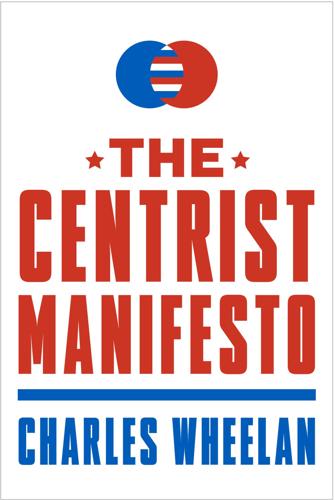
The Centrist Manifesto
by
Charles Wheelan
Published 18 Apr 2013
Notes 1 New York Times exit polls for 2012 elections, http://elections.nytimes.com/2012/results/president/exit-polls (accessed January 2, 2013). 2 Thomas Friedman, “The Tea Kettle Movement,” New York Times, September 29, 2010. 3 Organisation for Economic Co-operation, “OECD Health Data 2012—Frequently Requested Data,” http://www.oecd.org/els/healthpoliciesanddata/oecdhealthdata2012-frequentlyrequesteddata.htm (accessed January 2, 2013). 4 American Society of Civil Engineers, “Report Card for America’s Infrastructure: 2009 Grades,” http://www.infrastructurereportcard.org/ (accessed January 2, 2013). 5 “Life in the Slow Lane,” Economist, April 30, 2011. 6 Tamar Lewin, “Once a Leader, U.S. Now Lags in College Degrees,” New York Times, July 23, 2010. 7 Charles M.
…
We spend significantly more on medical care than all other developing countries, but we get significantly less in terms of good health. Life expectancy in the United States is lower than the average for all other developed countries—and the gap is growing, not shrinking.3 Our infrastructure is crumbling. The American Society of Civil Engineers has estimated that the United States needs to spend two trillion dollars just to fix the roads, bridges, and rail lines we have—let alone expand things that will be necessary to support the world’s most vibrant economy over the next century, such as airport capacity and high-speed rail.4 As the British news magazine The Economist noted recently in a report on America’s transport infrastructure, “America, despite its wealth and strength, often seems to be falling apart.”5 We have done nothing to address climate change, other than cling to the delusional hope that it is not happening.
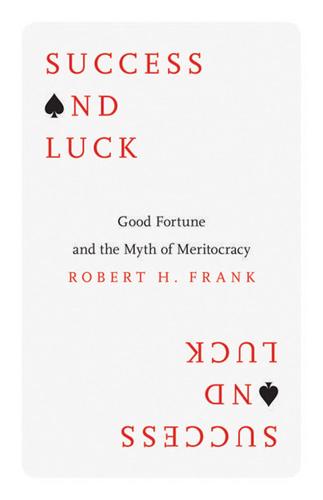
Success and Luck: Good Fortune and the Myth of Meritocracy
by
Robert H. Frank
Published 31 Mar 2016
For an excellent survey of how views about luck differ along the political spectrum, see Dean M. Gromet, Kimberly A. Hartson, and David K. Sherman, “The Politics of Luck: Political Ideology and the Perceived Relationship between Luck and Success,” Journal of Experimental Social Psychology 59 (2015): 40–46. CHAPTER 6: THE BURDEN OF FALSE BELIEFS 1. American Society of Civil Engineers, Report Card for America’s Infrastructure, 2013, http://www.infrastructurereportcard.org. 2. Donna M. Desrochers and Steven Hurlburt, “Trends in College Spending: 2001–2011; A Delta Data Update,” Delta Cost Project: American Institutes for Research, 2014, www.deltacostproject.org/sites/default/files/products/Delta%20Cost_Trends%20College%20Spending%202001–2011_071414_rev.pdf. 3.
…
Doing so, however, requires intensive levels of investment. We who were born into highly developed countries are thus the lucky beneficiaries of centuries of intensive investment by those who came before us. In recent decades, however, those investments have been depreciating. A 2013 report from the American Society of Civil Engineers estimated that the United States faced a $3.6 trillion backlog in essential maintenance for existing infrastructure.1 Crumbling roads and unsafe bridges are common across the country, as are failing water and sewage systems. Millions live downstream from dams that could collapse at any moment.
…
Viard and Robert Carroll, Progressive Consumption Taxation: The X-Tax Revisited, Washington, DC: AEI Press, 2012. INDEX Abramson, L. Y., 73 According to Jim, 31 adoption, 36, 57, 58 Allen, Paul, 34 Alloy, L. B., 73 Alou brothers, 33 American Dream, the, 4, 145 American Economic Association, 25 American Economic Review, 28, 126, 133, 171 American Enterprise Institute, 127, 171 American Society of Civil Engineers, 87 Anderson, Chris, 47 antlers in bull elk, 116–18, 118 Apotheker, Léo, 53 Apple, 44, 49, 132 Arab Spring, 107 Archilla, Gustavo, 106 artificial intelligence, 70 attention scarcity, 48–49 attribution theory, 77 austerity policies, 134 availability heuristic, 79, 80 baby boomer retirements, 97, 127, 167 Baker Library, 36 Bartlett, Bruce, 90 Bartlett, Monica, 101 Baumeister, Roy, 75 Beatty, Warren, 23 behavioral economics, 69, 70, 96 Bernanke, Ben, 133–35 best seller, xiii, 45 Betamax, 44, 45 birth order effects, 32 birth-date effects: in hockey, 38; in the workplace, 38 Blackstone, 103 Blockbusters, 48 Bloomberg Business, 132 Bonaparte, Napoleon, 7 Boudreaux, Donald, 122 Breaking Bad, 24, 31, 68 British accent, 4 Broderick, Matthew, 24, 68 Brooklyn Dodgers, 142 Brooks, David, 83, 84 Buffett, Warren, 12, 39 Bush, George H.
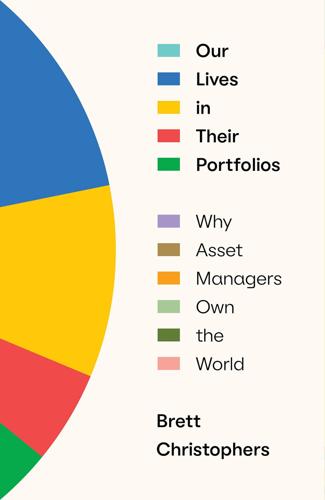
Our Lives in Their Portfolios: Why Asset Managers Own the World
by
Brett Chistophers
Published 25 Apr 2023
Confidence that the considerable long-term silver lining to Covid-19 might be a new era of big government, spending generously on investments with significant public benefit, was especially high in the United States. On the one hand, it was already widely appreciated that the need for such investment was disproportionately urgent in that country. In the 2021 iteration of its influential ‘report card’ on the state of US infrastructure, for example, the American Society of Civil Engineers (ASCE) rated eleven of seventeen categories of national infrastructure in the D-range – indicating ‘mostly below standard’, exhibiting ‘significant deterioration’ and ‘strong risk of failure’ – and estimated the funding gap over the following decade at $2.6 trillion.9 Meanwhile, January 2021 saw a new, Democratic president come to power.
…
King, ‘How Much is Covid Costing the UK and How Will We Pay?’, 22 June 2021 – at bbc.com. 6 M. Sandbu, ‘The Post-Pandemic Brave New World’, IMF, December 2020 – at imf.org. 7 Tooze, ‘What if the Coronavirus Crisis Is Just a Trial Run?’ 8 Ibid. 9 American Society of Civil Engineers, ‘A Comprehensive Assessment of America’s Infrastructure: 2021 Report Card’, March 2021 – at infrastructure reportcard.org. 10 Tooze, ‘What If the Coronavirus Crisis Is Just a Trial Run?’ (emphasis in original). 11 ‘The American Jobs Plan’, 31 March 2021 – at whitehouse.gov. 12 B. Alexander, ‘Privatization Is Changing America’s Relationship with Its Physical Stuff’, Atlantic, 12 July 2017. 13 L.
…
Nobody knows we’re there …’ —Bruce Flatt, CEO of Brookfield Asset Management Contents Abbreviations Introduction 1. Asset-Manager Society: The Basics 2. How It Came to Be 3. Mapping Asset-Manager Society 4. The Costs 5. Who Gains? 6. The Future Notes Acknowledgements Index Abbreviations APPR Société des Autoroutes Paris-Rhin-Rhône (France) ASCE American Society of Civil Engineers AUM assets under management BAM Brookfield Asset Management BREIT Blackstone Real Estate Income Trust BREP Blackstone Real Estate Partners BRI Belt and Road Initiative (China) BRT bus rapid transit BTR build to rent CEO chief executive officer COP26 2021 United Nations Climate Change Conference CPP Canada Pension Plan CPPIB Canada Pension Plan Investment Board DfE Department for Education (UK) ESG environmental, social and governance G20 Group of Twenty G7 Group of Seven GIIA Global Infrastructure Investor Association GIP Global Infrastructure Partners GND Green New Deal GP general partner GSE government-sponsored enterprise HUD Department of Housing and Urban Development (US) IFC International Finance Corporation IIJA Infrastructure Investment and Jobs Act (US) IMF International Monetary Fund INREV European Association for Investors in Non-Listed Real Estate Vehicles IPO initial public offering IRR internal rate of return LP limited partner MAp Macquarie Airports MEIF3 Macquarie European Infrastructure Fund III MIM Manulife Investment Management MIRA Macquarie Infrastructure and Real Assets MKIF Macquarie Korea Infrastructure Fund MOIC multiple of invested capital MSIP Morgan Stanley Infrastructure Partners NHP Nursing Home Properties OECD Organisation for Economic Co-operation and Development OMERS Ontario Municipal Employees Retirement System PFI Private Finance Initiative (UK) PGII Partnership for Global Infrastructure and Investment PIF Public Investment Fund of Saudi Arabia PPA power-purchase agreement PPP public–private partnership PSERS Pennsylvania Public School Employees’ Retirement System REIT real-estate investment trust RTC Resolution Trust Corporation (US) S&L savings and loan SEK Swedish kronor SHP Swedish Hospital Partners SIB Washington State Investment Board SMG Seoul Metropolitan Government SPV special purpose vehicle SVT Sveriges Television SWF sovereign wealth fund UKIB UK Infrastructure Bank UNDP United Nations Development Programme Introduction Summer House Plenty of stories about the modern world are told through the lens of Silicon Valley, the famous region nestled at the southern end of the San Francisco Bay.
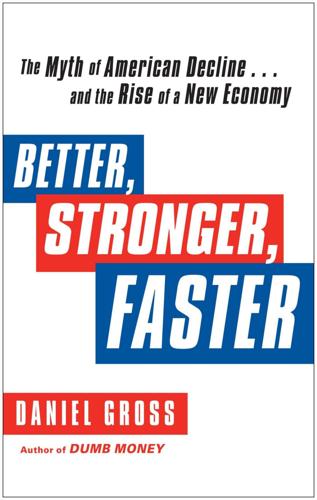
Better, Stronger, Faster: The Myth of American Decline . . . And the Rise of a New Economy
by
Daniel Gross
Published 7 May 2012
To attract and handle more tourists, American airports need a facelift and major internal surgery; they have to become as efficient as their counterparts overseas. These are signs that the United States is falling behind, especially when countries such as China are making splashy, highly visible infrastructure investment. In its 2009 Infrastructure Report Card, the American Society of Civil Engineers (ASCE) estimated that the United States needed to invest $2.2 trillion in infrastructure over five years, and that only $903 billion of that total had been budgeted. And Larry Summers said, “Compare Kennedy Airport with the airport where you land, and you ask yourself which is the airport of the greatest country, richest, most powerful country in the world?”
…
Data on Amazon.com’s revenues can be seen at http://money.usnews.com/money/blogs/flowchart/2011/06/30/why-us-companies-arent-so-american-anymore; information on LivingSocial and HomeAway’s expansion can be found at the companies’ websites; Lynn Cowan, “HomeAway IPO Opens at 34% after Pricing Well,” Wall Street Journal, June 29, 2011, http://www.marketwatch.com/story/homeaway-ipo-opens-up-34-after-pricing-well-2011-06-29. 3. Larry Summers’s remarks can be seen at http://tech.fortune.cnn.com/2011/07/19/brainstorm-tech-video-larry-summers-transcript/. 4. The American Society of Civil Engineers “Infrastructure Report Card” can be seen at http://www.infrastructurereportcard.org/. 5. Raul Katz, “Estimating the Economic Impact of the Broadband Stimulus Plan,” http://www.gcbpp.org/files/BBSTIM/KatzBBStimulusPaper.pdf; the ITU’s broadband rankings can be seen at http://www.websiteoptimization.com/bw/1109/; Pando Networks’ download speed rankings can be seen at http://dl.dropbox.com/u/33013/pandoglobalstudy.pdf. 6.
…
Index Abdullah, King of Saudi Arabia, 125 advertising, 7, 50, 136, 143, 201, 202 exports and, 129–30 Aegis Communications, 172 agriculture, 20, 99–101, 206, 227 exports and, 100–101, 104, 122, 154, 160 in North Dakota, 149, 153–58, 162 AIA, 35 AIG, 32–33, 35–36, 133 Airbnb, 194–95 Ally Financial, 40, 42 Altman, Daniel, 141 Amazon.com, 22, 203 American Association of Publishers, 193 American Bankers Association, 12–13 American Petroleum Institute, 104 American Recovery and Reinvestment Act, 30 American Society of Civil Engineers (ASCE), 208 Anheuser-Busch, 95, 158 AOL, 183–84, 195 A123 Systems, 211 Apple, 140–41, 143, 195, 198–201 Areddy, James T., 101 Argentina, 85, 176, 203 arms, exports of, 108–9 Armstrong, Tim, 183 Arvizu, Dan, 210 Asia, 13, 35, 87, 144, 203, 226, 228 employment and, 164, 168 exports and, 103, 105, 120, 123 inports and, 131, 138, 140, 146 North Dakota and, 155, 161 and reshoring and insourcing, 169–70, 173, 176–78 Associated Press, 174, 190, 206 Association of International Educators (NAFSA), 119–20 athletes, 126–27 ATM machines, 124, 174–76 Auletta, Ken, 183 Australia, 14, 48, 74, 103, 203 exports and, 98, 106, 122 autos, automakers, 2, 7, 14–15, 21, 34, 104, 186 bailout of, 33, 40–43, 46, 133, 136 efficiency economy and, 60–61, 69, 75, 77–79, 102, 173, 222–24, 227 efficient consumers and, 182, 190–93, 195–96 electric, 41, 79, 97, 210–11, 222 FDI and, 82, 87, 97 hybrid, 78–80, 211 inports and, 133–37, 227 Japan and, 14, 26, 41, 79, 87, 134–35, 173 and reshoring and insourcing, 167–68, 173–74 restructuring and, 46, 51–52, 78, 136, 173–74 supersizing and, 210–11 Bach Composite, 86 bailouts, 6, 20, 23, 46, 51–52, 133, 136–37 of Fannie Mae and Freddie Mac, 32, 35, 42–43 TARP and, 36–38, 40–42 timely policy decisions and, 28, 31–43 Bailyn, Bernard, 18 Bain Capital, 50–51 Baker, Akbar Al, 108 Bakken Shale, 151 Banco do Brasil, 95 Bank of America, 37–38, 48 Bank of East Asia, 92 Bank of Hawaii, 124 bankruptcies, 1, 82, 111, 166, 218 of CIT Group, 47–48 efficiency economy and, 78, 80 restructuring and, 44–48, 51, 53, 55, 58, 78, 136 timely policy decisions and, 40–41 banks, bankers, banking, 1–4, 16, 21, 25–26, 65, 81, 208, 217, 219 bailouts and, 6, 20, 32–34, 38–40, 42–43 of China, 20, 82, 92–94 economic decline and, 12, 17 efficient consumers and, 184, 190 exports and, 112, 124, 129 failure of, 1, 39–40, 46, 92 FDI and, 83, 85, 92–95 in history, 13–14, 36 of Japan, 29–30, 37, 47 North Dakota and, 156–58 regulation of, 19, 25 restructuring and, 45–47, 51, 53–55, 58 strengthening recovery and, 216, 220 TARP and, 36–38 timely policy decisions and, 32–34, 36–40, 43 Barboza, David, 141 Batali, Mario, 123 Bear Stearns, 32–33, 53 Beck, Jill, 155–56, 162 beer, beer business, 144, 194, 206 FDI and, 95–96 North Dakota and, 158–59 and reshoring and insourcing, 177–78 Bennett, Jeff, 87 Berger, John, 153 Bernanke, Ben, 32–33 Bernstein, Peter, 206 Berry Petroleum, 80 Better Place, A, 211 BigBelly Solar, 75, 107, 195, 204 efficiency economy and, 64–68, 72 Big Roads, The (Swift), 207 Bison Gear & Engineering, 67 Blinder, Alan, 31, 164 Blonder Home Accents, 111 Bloomberg, 33, 109 BMW, 79, 87, 97 Boehner, John, 5, 222 Boeing, 51, 108, 227 Book of Masters, 137 Bopp, Aric, 88–89 Boskin, Michael, 5 Boston, Mass., 72, 144, 192, 212, 224 BigBelly Solar and, 66–67 restructuring and, 49–51 Boston Community Capital, 225 Boston Consulting Group (BCG), 117, 166–68, 179 Boston Properties, 51 bottled water, 184–85 Bowen, Wally, 209–10 Bowles-Simpson Commission, 221–22 BP Amoco, 153 brands, 46, 159, 183, 206, 215 exports and, 111, 117, 119 FDI and, 87, 93, 96 inports and, 132, 135, 138–41, 143–44, 227 supersizing and, 199, 202 Braskem, 95 Brattle Group, 210 Brazil, 19, 100–101, 175 exports and, 101, 103–4, 109, 122 FDI and, 82, 85, 94–95 inports and, 131, 144–46 BRIC nations, 19–20, 23, 151 Broadway Partners, 49–50 Buffalo Commons theory, 150 Buicks, Buick, 78, 134–36, 227 Bull, 171 Bureau of Labor Statistics, 166, 187, 191 Burger King, 95 Burr, Aaron, 218 Bush, George W., 5, 16, 26, 30, 33, 222 business cycles, 17–18, 82, 231 Business Roundtable, 146–47 Cai Yong, 134 California, 79–80, 149, 161, 211–12 FDI and, 84, 92, 96–97 tourism in, 122–23 Campagna, Michael A., 178 Canada, 4, 48, 74, 202 exports and, 100, 122 FDI and, 92, 95 capitalism, 3, 14, 25, 45 Capital One, 58 Capital Purchase Program (CPP), 36–38 carbon, 170, 186 efficiency economy and, 61, 65, 75 taxes on, 61, 75, 103–4, 217 Card Hub, 55, 58 Cargill Malt, 158–59 Caro, Robert, 206 casinos, 85, 152 Cavendish Farms, 159–60 Census Bureau, 53 Center for Budget and Policy Priorities, 222 Center Rock Inc., 108 Central Park, 85, 94, 212 Chandan, Sam, 94 Chandler, Alfred, 206 Chegg.com, 193, 195, 204 Cheniere Energy Partners, 106 Chesapeake Bay Candle, 177 Chevrolets, Chevrolet, 41, 77, 135–36, 199 Chicago, Ill., 8, 67, 90, 193, 212 China, 6–9, 14, 18–21, 25–26, 82, 164–78, 187, 217 comparisons between U.S. and, 7–8, 25, 166–67, 202, 208 economy of, 2, 7–8, 18–20, 25, 141, 148, 165, 178, 222 efficiency economy and, 62, 67–69, 71, 227 employment and, 164–68, 170 FDI and, 85–87, 92–94, 97, 164 incomes in, 20, 164–67 inports and, 134–36, 138–44, 146, 164, 227 and reshoring and insourcing, 169–78, 222 trade and, 94, 98, 100–104, 106–9, 112–14, 116, 118–20, 122–28, 164 China Eastern, 124 China UnionPay, 124 Christie, Chris, 211 Chrysler: bailout of, 40–42 bankruptcy of, 40–41, 46, 51, 136 Fiat’s acquisition of, 40, 78, 87 and reshoring and insourcing, 173–74 Chung, Winston, 97 CIT Group, 47–49 Citi, Citibank, Citigroup, 37, 53, 84–85, 172 Citic Press, 128 Civilian Conservation Corps (CCC), 206–7 Civil War, 18, 82 Civil Works Administration, 206 Cleveland Clinic, 126, 145 Clinton, Bill, 26, 31, 70, 217–18, 228 Clooney, George, 129, 227 CNBC, 4, 108 CNG Now, 105 CNOOC, 86 coal, 102–5, 162, 165, 202 Coca-Cola, 83–84, 143, 202, 227 inports and, 133, 137–38, 146 coffee, 139–40, 181 Coleman, 171 collateralized debt obligations, 36 Collinses, 111–14, 116 Colombia, 26, 131, 148 FDI and, 85, 88–91 Commerce Department, U.S., 1, 54, 99–100, 104, 120, 122, 125, 219 Commercial Paper Funding Facility, 34 Committee on Foreign Investment in the United States, 96 competition, 3, 19, 21, 23, 80, 83, 106–7, 167, 194, 204, 228 efficiency economy and, 62, 68, 77 efficient consumers and, 193, 196 inports and, 131–32, 137, 141 North Dakota and, 148, 161 and reshoring and insourcing, 169, 179 Congress, U.S., 14, 19, 23–24, 125, 146 deficits and, 221–22 economic decline and, 3, 10 health care reform and, 5–6 U.S. credit rating and, 1–2 Congressional Budget Office, 31 Connecticut, 50, 86, 105, 140, 146, 151, 161–62, 212 efficient consumers and, 187–88 Conservation and Recreation Department, Mass., 66 construction, 174 efficient consumers and, 190–91 housing crisis and, 219–20 infrastructure and, 205–6, 209, 211, 213 North Dakota and, 152–53, 155–56 Consumer Price Index, 187 consumers, consumerism, consumption, 2, 25, 28, 81, 101, 111, 216, 219 coal and, 102–3 economic pessimism and, 22–23 efficiency economy and, 64–65, 68, 73–75, 78, 223–24 exports and, 98–99, 104–5, 107, 110, 119, 128, 130–31, 147, 154, 164 FDI and, 83, 89–90, 92–93 indebtedness and, 9–10, 53–57 inports and, 131–32, 136–37, 141, 143, 147, 227 North Dakota and, 151, 153–54 and reshoring and insourcing, 169, 172, 175, 177 restructuring and, 44–45, 53–59 supersizing and, 202, 204, 209 see also efficient consumers Cooper, Bill, 105 Cooper, Stephen, 44 CoreLogic, 190 corporations, 1, 9–10, 60, 139–43, 163–67, 169–85, 192–206, 225 comparisons between consumers and, 181, 185, 189, 195 and costs of labor, 164–67 economic optimism and, 23–24 economic pessimism and, 22–23 efficiency economy and, 63–68, 71, 75–76, 80–81, 158, 172, 223 efficient consumers and, 181–85, 192–96 exports and, 98, 103, 108–10, 112–14, 116–17, 131, 177 FDI and, 82–96 global, 22, 24, 71, 95 inports and, 132, 135–37, 139–42, 144, 146–47, 202–3, 227 job growth and, 218–19 North Dakota and, 152–53, 155, 157–60 recoveries and, 17–18, 21, 215 and reshoring and insourcing, 167, 169–79 restructuring and, 44–45, 47–49, 52–53, 57–58, 81, 166 supersizing and, 199–206, 209–10 taxes on, 146–47, 163 timely policy decisions and, 28, 30, 34 U.S. economic importance and, 227–28 Costner, Kevin, 129–30 Coty, 71 Coulomb Technologies, 211 Council of Economic Advisers, 31 Cowan, Lynn, 203 Creation Technologies, 67 credit, 32–36, 94, 194 booms in, 21, 29, 56, 62 crisis in, 2, 4, 23, 26, 48, 53 exports and, 112–13 restructuring and, 49, 51, 53–56, 58 timely policy decisions and, 29, 32–33, 35–36, 42–43 credit cards, 34, 183–85 restructuring and, 54–56 credit ratings, 1–2, 11, 52 Credit Suisse, 137, 223 Davis, Fred, 90–91 debt, 1, 19–20, 23–24, 60, 185 CIT Group and, 48–49 consumers and, 9–10, 53–57 crises and, 6, 29, 216 efficiency economy and, 62–63, 72, 78 efficient consumers and, 181, 189, 193, 196 Erie Canal and, 205–6 FDI and, 82, 94 national, 2, 5, 11, 217 North Dakota and, 155–56 restructuring and, 45–59, 78 strengthening recovery and, 215–16 timely policy decisions and, 32–34, 36, 39, 42 see also loans, lending, lenders debt ceiling extensions, 2, 217 Dedrick, Jason, 140 Defense Department, U.S., 109 deficits: budget, 2, 6, 10, 64–65, 217, 221–22 efficiency economy and, 64–65 trade, 102, 107, 168, 221–22 Delphi, 46 demand, 18, 31, 45, 57, 101, 132, 178, 221 efficiency economy and, 60, 62, 72–74, 223 exports and, 99, 104, 107–10, 116, 119 North Dakota and, 153–54, 159 supersizing and, 206, 208 Deming, W.
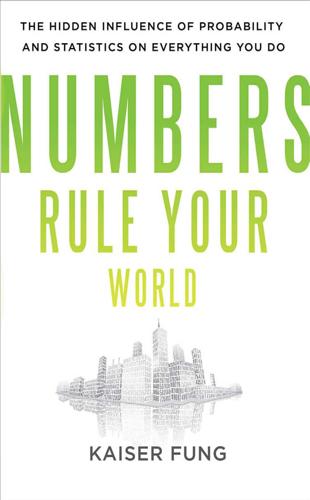
Numbers Rule Your World: The Hidden Influence of Probability and Statistics on Everything You Do
by
Kaiser Fung
Published 25 Jan 2010
His principle of “triple convergence” is a winning argument against adding capacity as the final solution to congestion because new capacity will just induce new demand. Downs put forth the provocative thesis that congestion itself is the market’s solution to a problem of mismatched supply and demand. National statistics on commuting were taken from Elisabeth Eaves’s article “America’s Worst Commutes,” published in Forbes. The American Society of Civil Engineers issues an annual Report Card for America’s Infrastructure, which measures road congestion in all fifty states. The engineering community has only recently recognized the importance of managing the reliability (variability) of trip time; see Richard Margiotta’s presentation to the National Transportation Operations Coalition, available online, for the state of the art.
…
State senator Dick Day led a charge to abolish the nationally recognized program, portraying it as part of the problem, not the solution. In his view, decades of ramp metering had come to naught as the Twin Cities continued to be among the most congested in America. The state came dead last, with 71 percent of its urban freeways declared congested in a report by the American Society of Civil Engineers. Leave it to Senator Day to speak the minds of “average Joes”—the people he meets at coffee shops, county fairs, summer parades, and the stock car races he loves. He saw ramp metering as a symbol of Big Government strangling our liberty: “It’s always bothered me—who stops? Who is the first person to stop at a ramp meter in the morning?
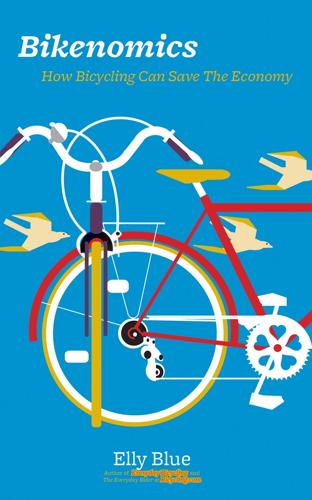
Bikenomics: How Bicycling Can Save the Economy (Bicycle)
by
Elly Blue
Published 29 Nov 2014
The real costs may be much higher when taking into account bridges, tunnels, over and underpasses, and various other factors. Politifact Oregon, March 19, 2011 32 Southeastern Wisconsin Regional Planning Commission Planning Report No. 47 A Regional Freeway Reconstruction System Plan For Southeastern Wisconsin 2005 33 American Society of Civil Engineers, Infrastructure Report Card, 2013. 34 “Repair Priorities,” a 2011 report by Smart Growth America and Taxpayers for Common Sense found that between 2004 and 2008, $22 billion dollars, or 57% of state costs were sunk into building new roads—23,300 miles in total. That left less than half the available funding, or a total of $16 billion for repair of the remaining 98.7%, nearly 2 million lane miles, of the nation’s state highways.
…
Because we are running out of money now—and not just federal money, but local money for local roads. In truth, we never had it. As early as 2000, the amount of spending needed for basic, safe maintenance of our national freeways and bridges was 20 percent higher than the $30 billion that was actually spent that year. More recently, according to the American Society of Civil Engineers, we need to make 3.6 trillion dollars in infrastructure investments by 2020, just to keep up with basic maintenance.33 But filling potholes just isn’t sexy. The great spate of road building set off in the 1950s continues quickly, and new highway projects are still political gold.34 Skill at leveraging federal money for road projects in one’s district are a standard metric of Congressional electability.
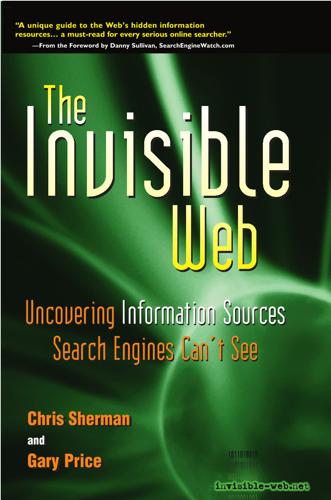
The Invisible Web: Uncovering Information Sources Search Engines Can't See
by
Gary Price
,
Chris Sherman
and
Danny Sullivan
Published 2 Jan 2003
Since then, PRIS has been continuously updated and improved, and it now constitutes the most complete data bank on nuclear power reactors in Science 355 the world. It has been widely used and today constitutes an essential source of information on nuclear power.” Search Form URL: See Main Page Related Resources: Additional Nuclear Power Related Databases http://www.iaea.org/databases/dbdir/fulllist.htm Engineering American Society of Civil Engineers (ASCE) Civil Engineering Database B http://www.asce.org “The Civil Engineering Database (CEDB) is designed to provide easy bibliographic access to all ASCE publications. The database covers ASCE documents published since 1973. It provides access to all the journals, conference proceedings, books, standards, manuals, magazines, and newsletters.”
…
Best Insurance Ratings, 178 Amateur Radio Call Sign Lookup, U.S., 297 Amazon.com, 103 America Online (AOL), 47 American Art Directory, 151 American Association of Health Plans (AAHP), 250 American Board of Medical Specialties (ABMS) “Who’s Certified” Database, 294 American Booksellers Association Member Directory, 322 American Community Network, 176 American Dental Association Members Directory, 294 American Export Register, 169 American FactFinder, 102 American Hospital Directory, 251–252 American Institute of Architects, 294 American Kennel Club Events Calendar and Awards Search, 329 American Marketing Association, 188–189 American Medical Association (AMA), 250, 294–295 American Memory Collection, The, 87–88, 99, 262 American political prints, LOC, 148 American Psychoanalytic Association, 377 American Psychological Association (APA), 42 American Religion Data Archive, 378 American Sign Language Browser, 325 American Society for Association Executives (ASAE), 196, 320 American Society of Civil Engineers (ASCE) Civil Engineering Database, 355 American Society of Composers, Artists and Publishers (ASCAP), 221 American Society of Home Inspectors (ASHI), 320 American Verse Project, 262 Americans and Aquarium Association, 347 America’s Job Bank, 185–186 Amtrak, 316–317, 339–340 amusements, 218 anagrams, 218 analysis, browser agents, 50 annotations, 23, 24, 39 Annual Review of Population Law, 278 Index 405 Anro (Australian Agriculture), 344 Antarctica, 56, 351 Anthropological Index Online, 370 Anthropology Review Database, 370 AnyWho.Com, 97, 187–188, 297 A&P Mechanics Database, 295 APEC tariff database, 195 archaeology information resources, 152, 370–371 Archie, 4–5, 6–7, 58 archINFORM (International Architecture Database), 146 Archisplus (Database of the Historical Archives of the European Commission), 154 Architect Finder, The, 294 architecture information resources, 145–147, 151–152, 181, 265 archive catalog goals, 153 ArchiviaNet (National Archives of Canada), 157 Archon (Historical Manuscripts), 154–155 ArcHSearch (U.K.), 370 armed services information resources.
…
Search Form URL: See Main Page Related Resources: Public Health Databases Georgia Public Records 307 http://www.ph.dhr.state.ga.us:8090/ehi/owa/user_menu.main WITHIN Wisconsin http://www.state.wi.us/agencies/oci/ohci/qcmain.htm Health Facility Report Card Search Iowa http://www.dia-hfd.state.ia.us “There are over 800 licensed and/or certified healthcare facilities in the State of Iowa. With the Report Card Health Facility Locator you can create a list of facilities to view Report Card information.” Search Form URL: http://www.dia-hfd.state.ia.us/reportcards/ default.asp In-Depth Analysis of Revenues Illinois http://www.ioc.state.il.us/ Compose reports to analyze State of Illinois revenue data.
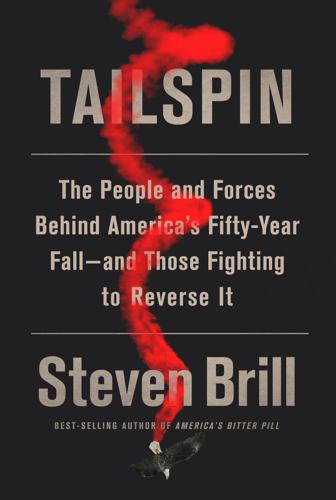
Tailspin: The People and Forces Behind America's Fifty-Year Fall--And Those Fighting to Reverse It
by
Steven Brill
Published 28 May 2018
Public trust in the government is near a historic low, according to other Pew survey data from May 2017: http://www.people-press.org/2017/05/03/public-trust-in-government-remains-near-historic-lows-as-partisan-attitudes-shift. 46.1 percent of American voters: Data from the Federal Election Commissionhttps://transition.fec.gov/pubrec/fe2016/2016presgeresults.pdf. 657 water main breaks: The American Society of Civil Engineers has estimated in its 2017 Infrastructure Report Card that there are an estimated 240,000 water main breaks per year, which averages to about 657 per day. The report card is available here: https://www.infrastructurereportcard.org/cat-item/drinking-water/. Note: The engineers society, of course, has an interest in emphasizing the need to repair infrastructure such as water systems.
…
In 2016, FedEx had to replace tires on its trucks twice as frequently as it did in 1997. Thirty-nine percent of America’s bridges are at least fifty years old and most have not been maintained in any way consistent with engineering standards. More than 56,000 were rated “structurally deficient” by the American Society of Civil Engineers in 2017. The engineers group, which issues a report card every year on the state of America’s infrastructure, declared in 2017 that there was a $1.1 trillion gap between projected infrastructure spending over the next ten years and what is needed to be spent to repair, maintain, and improve the country’s roads, highways, ports, waterways, dams, levees, schools, parks, water systems, sewer systems, power grid, airports, and bridges.
…
It took two to five years in the Rubber Room before the clogged arbitration calendar allowed for a teacher’s case to be heard, and the arbitrators, whose reappointments each year have to be approved by the teachers union, typically favored fines or suspensions rather than dismissal for even the most egregious cases. One hearing that I watched involved a fifth-grade Brooklyn teacher. Her five-thousand-page transcript for a hearing that ended up stretching over forty-five hearing days revealed that she had failed to correct student work, prepare lesson plans, or fill out report cards. The morning I sat in on the hearing, her union-paid lawyer contested whether there was any proof that the teacher had ever possessed the instruction manual that told her to do all of these basic tasks. This teacher was part of a rare group—one of only 1.8 percent of teachers rated unsatisfactory by New York City school principals—in a school system where a large majority of the children were consistently found to be performing below grade level in reading and math.
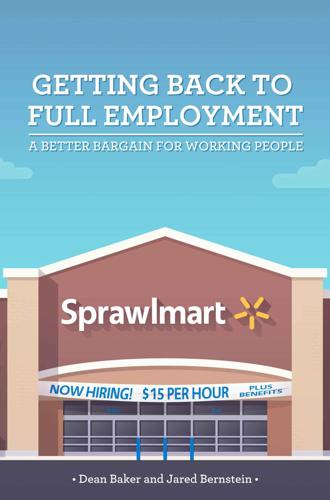
Getting Back to Full Employment: A Better Bargain for Working People
by
Dean Baker
and
Jared Bernstein
Published 14 Nov 2013
References Akerlof, George, William Dickens, and William Perry. 1996. “The Macroeconomics of Low Inflation.” Brookings Papers on Economic Activity, Vol. 1996, No. 1, pp. 1-76. http://www.jstor.org/discover/10.2307/2534646?uid=3739584&uid=2&uid=4&uid=3739256&sid=21101919624531 American Society of Civil Engineers (ASCE). 2013. “2013 Report Card for America’s Infrastructure.” http://www.infrastructurereportcard.org/a/#p/home Anderson, Palle and David Gruen. 1995. “Macroeconomic Policies and Growth.” Research Discussion Paper 9507. Sydney: Reserve Bank of Australia. http://citeseerx.ist.psu.edu/viewdoc/download?
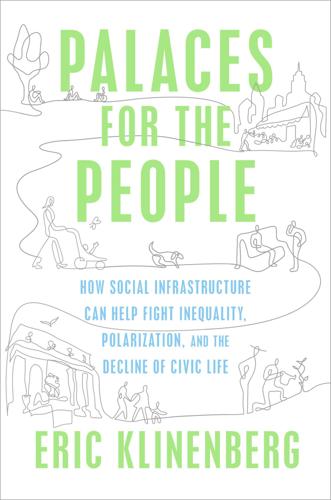
Palaces for the People: How Social Infrastructure Can Help Fight Inequality, Polarization, and the Decline of Civic Life
by
Eric Klinenberg
Published 10 Sep 2018
“Minerva’s performance is unique”: Stephen Kosslyn, “Minerva Delivers More Effective Learning. Test Results Prove It,” Medium, October 10, 2017, https://medium.com/minerva-schools/minerva-delivers-more-effective-learning-test-results-prove-it-dfdbec6e04a6. CHAPTER FOUR: HEALTHY BONDS their miserably low scores: American Society of Civil Engineers, 2017 Infrastructure Report Card, https://www.infrastructurereportcard.org/americas-grades/. street drugs like heroin: US Centers for Disease Control and Prevention, “Vital Signs: Overdoses of Prescription Opioid Pain Relievers—United States, 1999–2008,” Morbidity and Mortality Weekly Report 60, no. 43 (2011): 1487.
…
Today, our communities are full of children whose future, like Jelani’s, will be formed in the places where they go to learn about themselves and the world they’ll inherit. They deserve palaces. Whether they get them is up to us. CHAPTER FOUR Healthy Bonds Every four years, the American Society of Civil Engineers (ASCE) issues grades for the nation’s infrastructure, and if the federal government were a high school student, it would tear up the report before bringing it home. In 2017, as in 2013, America’s overall infrastructure score was a D+, but it could have been worse. The rail network, despite high-profile failures of the Amtrak line in the busy Northeast Corridor and the New York City subway system, got a B.
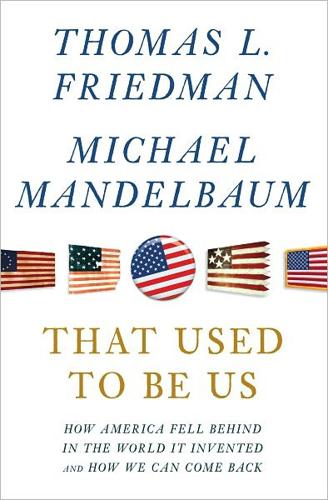
That Used to Be Us
by
Thomas L. Friedman
and
Michael Mandelbaum
Published 1 Sep 2011
In the Terrible Twos, our roads got more crowded, our bridges got creakier, our water systems got leakier, and the lines in our airports got longer. In 2009, the American Society of Civil Engineers (ASCE) issued a Report Card for America’s Infrastructure, and gave America an overall grade of D. The report also gave individual grades to fifteen infrastructure categories. None got higher than C+. “Decades of underfunding and inattention have endangered the nation’s infrastructure,” the engineers said, adding that since the ASCE’s last report card in 2005, there has been little change in the condition of America’s roads, bridges, drinking-water systems, and other public works, but the cost of repairing them (when they do get repaired) has risen.
…
Alabama, University of; Creative Campus Alibaba Alice’s Adventures in Wonderland (Carroll) Alito, Samuel Allegheny College Allen, Woody All in the Family (television show) Alonzo, Amanda Alpoge, Levent al-Qaeda Aman, Peter Amanpour, Christiane Amazon; Web Services (AWS) America COMPETES Act (2007) American Association of Retired Persons (AARP) American Federation of State, County and Municipal Employees American Federation of Teachers American Interest, The Americans and the California Dream (Starr) American Society of Civil Engineers (ASCE) American Solutions American Telephone and Telegraph (AT&T) Amtrak Acela Anand, Namrata Andersen, Kurt Anderson, Chris Android Angelides, Phil anti-Federalists AOL Apollo space program Apotheker, Léo Apple; iPad; iPhone; iPod; Macintosh computers Applied Materials apps Arab oil embargo Arab world, uprisings in Argonne National Laboratory Arkansas Armey, Dick Army, U.S.; Training and Doctrine Command Asato, Cathy Asia Society, Center on U.S.
…
In chapter 6, we cited the unimpressive showing of American fifteen-year-olds in the international PISA test, which measures student skills in reading, math, science, and critical thinking. But many other warning signs that America’s education system was underperforming at all levels showed up in the Terrible Twos. In a speech to the Council on Foreign Relations (October 19, 2010), Arne Duncan, the secretary of education, issued his own report card on the status of American education. On a broad set of metrics of educational attainment, we didn’t do well. Just one generation ago, the United States had the highest proportion of college graduates in the world. Today, in eight other nations, including South Korea, young adults are more likely to have college degrees than in the U.S.

Scarcity: The True Cost of Not Having Enough
by
Sendhil Mullainathan
Published 3 Sep 2014
A similar focus on the urgent at the expense of the important has long been observed in the workings of governments that, over decades of tight budgeting, have slashed spending on infrastructure. The upkeep of bridges, for example, is a critical investment. Yet it is one that is all too easy to put off when budgets are tight and cuts are needed. Decaying bridges are important but not urgent, and so, according to a 2009 report issued by the American Society of Civil Engineers, approximately one in four rural bridges and one in three urban bridges in the United States are deficient. FAILING TO PLAN These various behaviors share one obvious feature: people are behaving myopically. This leads to the most basic implication of tunneling. When we focus so intensely on making ends meet now, we plan less effectively for the future.
…
For your reference, the terms that appear in the print index are listed below. abundance problem of slack and accidents of birth vehicle Adelson, Ted ADOPEM affluence behavioral economics and borrowing and slack and Africa air traffic control Alaska alcohol “All I Saw Was the Cake” Alzheimer’s Allen, Woody American Society of Civil Engineers Angry Blueberries antibiotics Aoki, Hiroaki (“Rocky”) appliances, shopping for Army, U.S. arousal, and performance artificial scarcity Asia Atkins diet attention bottom-up processing capture of performance and top-down processing attentional blink Australia automatic bill pay automatic impulse bandwidth building cognitive capacity and comes at a price economizing on executive control and tax terminology timeline Banerjee, Abhijit Bangladesh Bank of America bankruptcy banks bargaining basketball beer bees behavioral economics Benihana restaurants Berra, Yogi Bertrand, Marianne bills automatic payment late payment of Bjorkegren, Dan Bohn, Roger Bolivia borrowing Family Feud and payday loans traps tunneling and See also borrowing; debt Boston bottom-up processing Bowen, Bruce brain development lateralization perception See also mind bridges Bryan, Chris buffer stock cabinet castaways cancer carbohydrates carbon dioxide Carlin, George cars accidents cell phone use and eating in impulse purchases insurance registration repairs repossession shopping for traffic cash transfer programs castaways cell phones Center for Responsible Lending Chapanis, Alphonse checker-shadow illusion chemistry Chennai, India Chevys restaurant child care China choices burden of one-off choking Christmas Churchill, Winston cigarettes taxes clothing packing professional purchase mistakes cockpit errors cocktails cognitive capacity cognitive science Cohen, Amanda college deadlines exams financial aid programs loans tuition communal tables commuters computers shopping for software computer vision syndrome conditional cash transfers consistency Consumer Reports contextual cues control impulses cortisol Covey, Stephen creativity credit cards crop insurance crop yields culture customer service dating, online daycare deadlines benefits of focus dividend and debt in India leveraged buyout payday loans rolled-over traps tunneling and See also borrowing; loans decisions, linking and the timing of declarative memory Dempsey, Christy diabetes dichotic listening task Dickinson, Charlie dieting diminishing marginal utility discretion, lack of disease divorce Dominican Republic DOTS (directly observed therapy) DVD players economics behavioral expertise and in India scarcity and 2008 recession edema education college financial literacy noise and Eisenhower, Dwight Eliot, T.
…
Jaikumar, Firefighting by Knowledge Workers (Information Storage Industry Center, Graduate School of International Relations and Pacific Studies, University of California, 2000), retrieved from http://isic.ucsd.edu/pdf/firefighting.pdf. Steven Covey finds it helpful to classify tasks: S. R. Covey, The Seven Habits of Highly Effective People (New York: Free Press, 2004). approximately one in four rural bridges: Bridges—Report Card for America’s Infrastructure, retrieved from http://www.infrastructurereportcard.org/fact-sheet/bridges. scarcity makes this problem a whole lot worse: There are many studies of the planning fallacy. Good reviews are: Roger Buehler, Dale Griffin, and Michael Ross, “Inside the Planning Fallacy: The Causes and Consequences of Optimistic Time Predictions,” in Heuristics and Biases: The Psychology of Intuitive Judgment, ed.

No Ordinary Disruption: The Four Global Forces Breaking All the Trends
by
Richard Dobbs
and
James Manyika
Published 12 May 2015
Since the 1970s, global investment as a share of GDP fell from 26.1 percent to a recent low of 20.8 percent in 2002. Total global investment from 1980 through 2008 averaged $700 billion per year less than it would have been had the investment rate of the 1970s persisted—a cumulative sum of $20 trillion. 24. 2013 report card for America’s infrastructure, American Society of Civil Engineers, www.infrastructurereportcard.org. 25. Dobbs et al., Infrastructure productivity. 26. Ibid. 27. Dobbs et al., Farewell to cheap capital? 28. Benedict Clements, Victoria Perry, and Juan Toro, From stimulus to consolidation: Revenue and expenditure policies in advanced and emerging economies, IMF, departmental paper no. 10/3, October 6, 2010, www.imf.org/external/pubs/ft/dp/2010/dp1003.pdf. 29.
…
Between 1980 and 2008, total investment was $20 trillion less than it would have been if countries had maintained historical rates of investment.22 That’s roughly equivalent to the combined GDP of Japan and the United States.23 The Acela, a high-speed train that connects Boston with Washington, is often slow, unreliable, and plagued by pokey Internet access. To eliminate current service deficiencies and expand capacity to keep pace with the growing demand, the American Society of Civil Engineers estimates that the United States needs to invest $1.6 trillion in infrastructure by 2020, on top of current levels.24 The US Department of Transportation has estimated that spending on public transit will have to increase by approximately 40 percent per year to bring it to a state of “good repair” by 2028.

The Second Machine Age: Work, Progress, and Prosperity in a Time of Brilliant Technologies
by
Erik Brynjolfsson
and
Andrew McAfee
Published 20 Jan 2014
Upgrade Infrastructure It’s almost universally agreed among economists that the government should be involved in building and maintaining infrastructure—streets and highways, bridges, ports, dams, airports and air traffic control systems, and so on. This is because, like education and research, infrastructure is subject to positive externalities. Excellent infrastructure makes a country a more pleasant place to live, and also a more productive place in which to do business. Ours, however, is not in good shape. The American Society of Civil Engineers (ASCE) gave the United States an overall infrastructure grade of D+ in 2013, and estimated that the country has a backlog of over $3.6 trillion in infrastructure investment.23 However, only a bit more than $2 trillion has been budgeted to be spent by 2020, leaving a large gap. You might think that the ASCE has an obvious bias on the question of infrastructure spending, but the data bear them out.
…
id=USARGDPH INDEX Academically Adrift: Limited Learning on College Campuses (Arum and Roksa) Acemoglu, Daron Affinnova Aftercollege.com Agarwal, Anant Age of Spiritual Machines, The: When Computers Exceed Human Intelligence (Kurzweil) Agrarian Justice (Paine) agriculture: development of inelastic demand in Ahn, Luis von Aiden, Erez Lieberman Airbnb.com Alaska, income guarantee plan in algorithms Allegretto, Sylvia Allstate Amazon Amazon Web Services American Society of Civil Engineers (ASCE) Android animals, domestication of Apple Arthur, Brian artificial intelligence (AI) future of SLAM problem in uses of see also robots Arum, Richard ASCI Red ASIMO Asimov, Isaac Asur, Sitaram Athens, ancient ATMs Audi Australia, immigrant entrepreneurship in Autodesk automation: future of labor market effects of in manufacturing Autor, David Baker, Stephen Barnes & Noble Bartlett, Albert A.
…
Office of Science and Technology Policy, March 2012, available at http://www.whitehouse.gov/sites/default/files/microsites/ostp/competes_report_on_prizes_final.pdf (accessed September 18, 2013). 22. For a detailed list, see the appendix of McKinsey and Company, “And the Winner Is . . . ” Research Report, 2009, http://mckinseyonsociety.com/downloads/reports/Social-Innovation/And_the_winner_is.pdf (accessed September 18, 2013). 23. “2013 Report Card for America’s Infrastructure,” ASCE, 2013, http://www.infrastructurereportcard.org/a/#p/home (accessed August 12, 2013). 24. See Matthew Yglesias, “The Collapse of Public Investment,” Moneybox blog, Slate, May 7, 2013, http://www.slate.com/blogs/moneybox/2013/05/07/public_sector_investment_collapse.html (accessed August 12, 2013); and the underlying data at “Real State & Local Consumption Expenditures & Gross Investment, 3 Decimal,” Economic Research—Federal Reserve Bank of St.
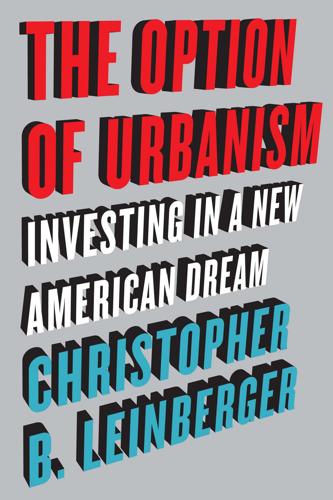
The Option of Urbanism: Investing in a New American Dream
by
Christopher B. Leinberger
Published 15 Nov 2008
Go to http://www.cabq.gov/council/impactfees.html for information about the City of Albuquerque impact fee system, which passed in 2003. The author served on the impact fee advisory panel, and the studies backing up the impact fee legislation justified fees that were twice as high as those implemented. 53. American Society of Civil Engineers, “Report Card for America’s Infrastructure,” http://www.asce.org/reportcard/2005/. 54. Congressional Research Service, Report for Congress, “Energy: Selected Facts and Numbers,” November 29, 2006, http://ncseonline.org/NLE/ CRSreports/06Dec/RL31849.pdf. 55. Testimony of Congressman Roscoe Bartlett before Congress on February 8, 2006, http://www.peakoil.net/Publications/PeakOilSpclOrder%2 315TextCharts020806Low.pdf.
…
There is no reason for the company 80 | THE OPTION OF URBANISM to even worry about its marginal cost of doing business, something taught in accounting 101 during the first year of business school. In the most recent “report card” on the fifteen categories of infrastructure in 2005, the American Society of Engineers (ASE) gave the country a “D,” down from a “D+” from the last report card in 2001. The ASE’s report, although certainly self-serving because the organization benefits from increased infrastructure investment, concluded, “Congested highways, overflowing sewers, and corroding bridges are constant reminders of the looming crisis that jeopardizes our nation’s prosperity and our quality of life.”53 The society estimated that an additional $1.6 trillion is required over the next five years to minimally improve current conditions.
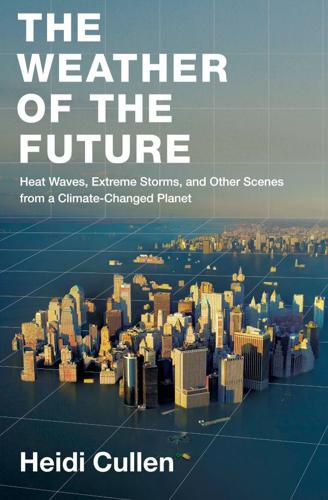
The Weather of the Future
by
Heidi Cullen
Published 2 Aug 2010
The country built an elaborate network of dikes, man-made islands, and a 1.5-mile stretch of sixty-two gates to control the entry and exit of North Sea waters into and out of the low-lying southwestern provinces. The Delta Plan is one of the largest construction efforts in human history and is considered by the American Society of Civil Engineers (ASCE) as one of the seven wonders of the modern world. New York—like the rest of the United States—doesn’t get nearly that kind of praise from the ASCE. In fact, in its 2009 Infrastructure Report Card, the ASCE gives America’s total infrastructure a D. In New York State, ASCE’s most serious concern is bridges, roads, and mass transit. The engineers found that 46 percent of New York’s major roads are in poor or mediocre condition, 42 percent of New York’s bridges are structurally deficient or functionally obsolete, and 45 percent of New York’s major urban highways are congested.
…
See Sahel region, Africa African monsoon, 68–69, 71, 74 Agassiz, Louis, 16–18 Aggarwala, Rit, 246 agriculture Bangladesh, 210 Central Valley, 137–47 Sahel region, 76–77, 80, 81–82 air pollution, 134–35, 142, 246 Akkadian Empire, 261–64 Alcoa, 176–77, 190 Allen, Myles, 269–70 alliaks, 160–61 American Society of Civil Engineers (ASCE), 238–39 Andes Mountains, 159–60 Aqqiaruq, Zacharias, 155 Arctic. See also Greenland; Inuit Nunaat, Canada forty-year forecast, 188–95 Arctic amplification, 166, 167 Arctic Circle, 155–56 Arctic sea ice. See sea ice Arctic shipping routes, 192–93 Army Corps of Engineers, U.S., 4–5, 240, 250–51 Arnatsiaq, N., 156–57, 163 Arrhenius, Svante, 21–23, 25–26, 29, 39, 40, 42 Asian Disaster Preparedness Center (ADPC), 202–3, 222–24 asthma, 134–35 Atlanta, hot days in, 288 Australia.
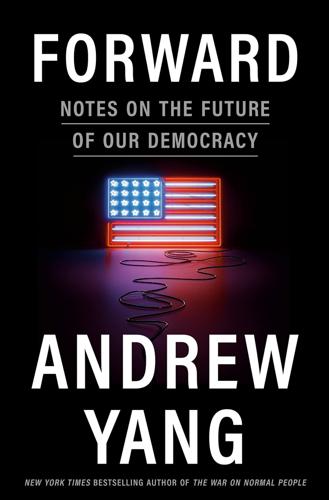
Forward: Notes on the Future of Our Democracy
by
Andrew Yang
Published 15 Nov 2021
During the pandemic, unemployment “Civilian Labor Force Participation Rate,” U.S. Bureau of Labor Statistics, accessed March 1, 2021, www.bls.gov/charts/employment-situation/civilian-labor-force-participation-rate.htm. Our infrastructure is crumbling Norma Jean Mattei, “2017 Infrastructure Report Card: A Comprehensive Assessment of America’s Infrastructure,” American Society of Civil Engineers, 2017. We can expand broadband access John Busby and Julia Tanberk, “FCC Reports Broadband Unavailable to 21.3 Million Americans, BroadbandNow Study Indicates 42 Million Do Not Have Access,” BroadbandNow, Feb. 3, 2020. We also have almost eight million Stephen Campbell, “New Research: 7.8 Million Direct Care Jobs Will Need to Be Filled by 2026,” Paraprofessional Healthcare Institute, Jan. 24, 2019.
…
WE’RE SHORT MILLIONS OF JOBS, BUT NOT SHORT OF WORK During the pandemic, unemployment spiked, but our labor force participation rate remained at historically low levels. We simply have too many people out of work, which is ridiculous considering all of the important work we have to do. Our infrastructure is crumbling. We received a D-plus from the American Society of Civil Engineers, with $4.6 trillion of work needed to be done by 2025 in order to get it up to an acceptable B. Our roads, bridges, schools, and water treatment facilities are all criminally underfunded, leading to preventable deaths and the poisoning of our children. And all of this is costing us more over time.
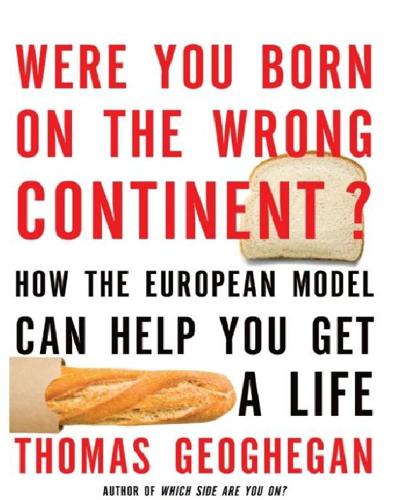
Were You Born on the Wrong Continent?
by
Thomas Geoghegan
Published 20 Sep 2011
It is thirty-five minutes by bus on Addison Street, and then I’m on the El, the Blue Line, broken down, 10 mph in the slow zones, if it comes at all. To get up to Brussels, I puff along on air. To get to O’Hare, I jolt along by stagecoach. And I’m one of the lucky few: only 5 percent of the country can even use public transport. The rest are sick with road rage when they’re not on Xanax. Here’s the 2009 report card from the American Society of Civil Engineers: aviation D, bridges C (but the bridge that collapsed in Minneapolis would get an F), drinking water D minus (and sinking fast), rail C minus, roads D minus, schools D (they mean the buildings may collapse). Twenty years ago, in 1988, when we thought the infrastructure was collapsing, the grades were higher.
…
Finally, thanks to André Schiffrin who kept after me to write this book—and did so even when for many years I’d be so lost in my real life as an American that I’d forgotten I’d ever been to Europe at all. Index Adams, Henry Adenauer, Konrad The Affluent Society (Galbraith) AFL-CIO After Tamerlane (Darwin) Agenda 2010 (Germany) and labor courts and wages/unemployment and welfare state America Works (Freeman) American Society of Civil Engineers Animal Farm (Orwell) Arendt, Hannah Bach, Stefan Baker, Dean banks Sparkassen (Germany) U.S. model Barnes & Noble BDA (Bundesvereinigung der Deutschen Arbeitgeberverbände) BDI (Bundesverband der Deutschen Industrie) Beckmann, Max Beer, Sam Bell, Daniel Bell, Linda The Bells (Frankfurt, Germany) Benedict XVI, Pope Benjamin, Walter Berlin, Germany after the financial meltdown cafés and economic recovery under Communism Dussmann’s bookstore East/West economy Humboldt University joblessness/unemployment labor court in labor organizing May Day parade (2001) New Year’s Eve reenactment of a firestorm old GDR parliament building old state swimming pool post-Wall/collapse of Communism Reichstag running in S-Bahn teaching American labor law in unification of Germany and moving of capital Wilmersdorf neighborhood young people in Berliner Orchestra Bernstein, Jared Bezemer, Dirk Bild (magazine) Bismarck, Otto von Blair, Tony Blinder, Alan Böckler Foundation Bonn, Germany bookstores in Europe Dussmann’s in Berlin France histories of German evil Borders Books Bowles, Sally Brandenburg Gate Brandt, Willy Brecht, Bertolt British Labour Party Burckhardt, Jacob Bush, George H.
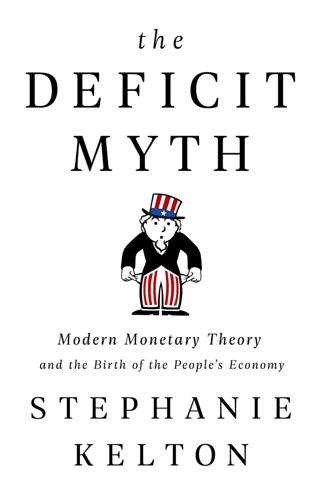
The Deficit Myth: Modern Monetary Theory and the Birth of the People's Economy
by
Stephanie Kelton
Published 8 Jun 2020
There are other levees and dams on the brink of failure.38 According to the 2017 Infrastructure Report Card, 15,498 dams have been declared as “high-hazard potential,” which is defined as: “A dam in which failure or mis-operation is expected to result in loss of life and may also cause significant economic losses, including damages to downstream property or critical infrastructure, environmental damage, or disruption of lifeline facilities.” The number of deficient high-hazard potential dams has risen to 2,170 or more.39 We have fallen so far behind, in fact, that the American Society of Civil Engineers (ASCE) gives a D+ grade to America’s infrastructure.
…
Irwin Redlener, “The Deadly Cost of Failing Infrastructure,” The Hill, April 2019, thehill.com/opinion/energy-environment/437550-ignoring-warning-signs-made-historic-midwest-floods-more-dangerous. 39. ASCE, “2017 Infrastructure Report Card: Dams,” Infrastructure Report Card, 2017, www.infrastructurereportcard.org/wp-content/uploads/2017/01/Dams-Final.pdf. 40. ASCE, Infrastructure Report Card, www.infrastructurereportcard.org/. 41. Lauren Aratani, “‘Damage Has Been Done’: Newark Water Crisis Echoes Flint,” Guardian (Manchester, UK), August 2019, www.theguardian.com/us-news/2019/aug/25/newark-lead-water-crisis-flint. 42.
…
We risk a debt crisis rivaling the 2008–09 crash.”40 Gail Wilensky, a former adviser to the first President Bush, claims that Medicare “is not sustainable in its current form,” adding that “aging baby-boomers,” along with “any increase from the historically low spending per capita will require some combination of benefit cuts, eligibility changes, cost-sharing increases, tax increases and reductions in payments to providers.”41 Financial columnist Philip Moeller writes: “Despite the lack of big short-term changes, both Medicare and Social Security remain on unaffordable financial paths that will, without serious reforms, soak up ever-larger shares of government spending, according to annual report cards released by the programs’ trustees on Monday.”42 Diana Furchtgott-Roth of the conservative Manhattan Institute declares flatly that “Medicare is clearly unsustainable.” She concludes: “As it stands now, Medicare cannot keep its promises to future seniors. It is the job of those elected politicians who said they would tackle the deficit to offer alternatives for debate and discussion.”43 All of these arguments are misguided because all are grounded in the deficit myth.

Digital Disconnect: How Capitalism Is Turning the Internet Against Democracy
by
Robert W. McChesney
Published 5 Mar 2013
See Heather Stewart, “£13tn Hoard Hidden from Taxman by Global Elite,” The Guardian, July 21, 2012. 31. For a discussion of this issue, see Morris Berman, Why America Failed: The Roots of Imperial Decline (Hoboken, NJ: Wiley, 2012), 59–62. 32. Bob Herbert, “Risking the Future,” New York Times, Feb. 2, 2009. 33. American Society of Civil Engineers, Infrastructure Report Card, infrastructurereportcard.org. 34. “A Patch on the Road,” The Economist, July 7, 2012, 34. 35. E.J. Dionne, “America Needs a Better Ruling Class,” Washington Herald News, Apr. 17, 2011. heraldnews.com/opinions/columnists/x1225326175/E-J-DIONNE-America-needs-a-better-ruling-class. 36.
…
Financier Felix Rohatyn once told New York Times columnist Bob Herbert, “A modern economy needs a modern platform, and that’s the infrastructure.”32 At midcentury, the United States had the most advanced infrastructure in the world by a wide margin; in the past three decades, it has fallen into collapse. The American Society of Civil Engineers estimates that the United States needs to spend $2.2 trillion over the next five years to get our infrastructure to the level of other economically advanced nations.33 Politicians most closely associated with business interests evince almost no concern. In 2012 The Economist characterized America’s neglect of its infrastructure “a foreseeable and utterly unnecessary disaster.”34 Washington Post columnist E.J.
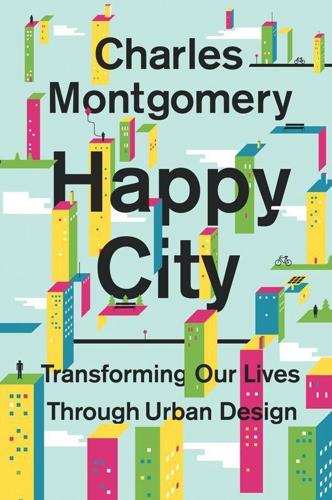
Happy City: Transforming Our Lives Through Urban Design
by
Charles Montgomery
Published 12 Nov 2013
broke city governments: Su, Eleanor Yang, “School Bus Service Vanishing Amid Cuts,” California Watch, September 2, 2011, http://californiawatch.org/dailyreport/school-bus-service-vanishing-amid-cuts-12438 (accessed March 3, 2012). $2 trillion: American Society of Civil Engineers, “Failing Infrastructure Cannot Support a Healthy Economy: Civil Engineers’ New Report Card Assesses Condition of Nation’s Infrastructure,” January 28, 2009, https://apps.asce.org/reportcard/2009/RC_2009_noembargo.pdf (accessed March 3, 2012). looked at job density: Minicozzi, Joseph, “The Value of Downtown: A Profitable Investment for the Community,” Public Interest Projects, 2011.
…
Across the United States, broke city governments have found themselves unable to fund police, fire, and ambulance services, let alone school buses or the maintenance of roads, parks, and community centers. Cities stretched so far, so fast, for so long, at such low densities that the country now faces a massive unfunded liability for infrastructure maintenance. The American Society of Civil Engineers (ASCE) has warned that repairing the country’s major infrastructure will cost more than $2 trillion. Save the Planet and Your Bank Account Residents of denser, more connected neighborhoods in central Atlanta are not only saving money by paying less in combined housing and transportation costs (right).
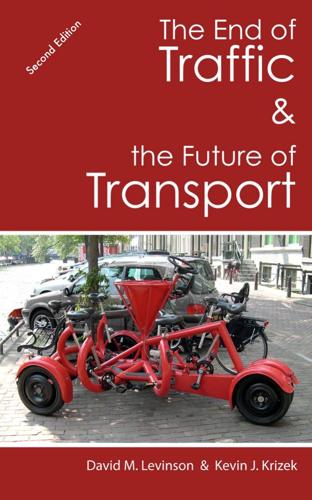
The End of Traffic and the Future of Transport: Second Edition
by
David Levinson
and
Kevin Krizek
Published 17 Aug 2015
The term has fallen into popular misuse to indicate any type of congestion. 7 In other lists that came out around the turn of the century, the interstate system has been referred to as the "Top 10 Construction Achievements of the 20th Century" (CONEXPO-CON/AGC); "Top 10 Achievements of the 20th Century" (American Society of Civil Engineers); and "25 Shapers of the Modern Era," referring to former Federal Highway Administrator Frank Turner, who was identified as the "The Superhighway Superman" (US News and World Report (Dec. 27, 1999). 8 David King, 3 Big Challenges for Planning Multi-Modal Cities. The Atlantic, CItyLab: http://www.citylab.com/design/2014/10/3-big-challenges-for-planning-multi-modal-cities/381254/ (accessed 17 October 2014). 9 The "paradigm shift" phrase is admittedly overused.
…
The letter k is used because it comes from the German word "koncentration". When you are the only car on the road, the density of traffic is low. When there are lots of cars on the road, the density is high. The density of traffic indicates the Level of Service, which is a grade that traffic engineers apply to roads, and ranges from A to F. Just like your report card, from the driver's point-of-view A is better than F. The maximum density, called "jam density", occurs when vehicles will line up end to end, and none can move until the car in front moves. If cars were on average 5 meters long, and literally "bumper-to-bumper", there could be 200 cars per kilometer per lane.

The Autonomous Revolution: Reclaiming the Future We’ve Sold to Machines
by
William Davidow
and
Michael Malone
Published 18 Feb 2020
The cities of the future may come to look and feel more like the old cities that Jane Jacobs celebrated and mourned in her book The Death and Life of Great American Cities half a century ago—lively, diverse federations of mixed-use neighborhoods, but powered by twenty-first-century infrastructure. The amount of construction required to create this autonomous country of the future is massive. The American Society of Civil Engineers (ASCE) has estimated that the country has a $3.6 trillion backlog and it is planning to spend only $2 trillion by 2020.44 Completing the projects identified by the society in a five-year period would require spending an additional $300 billion a year, or about 2 percent of GDP. The projects identified by the ASCE represent only a fraction of what has to be done to create a robust twenty-first-century infrastructure.
…
Ganesh Sitaraman, The Crisis of the Middle-Class Constitution (New York: Vintage Books, 2017), 231. 28. Ibid., 234. 29. Alan B. Krueger, “The Great Utility of the Great Gatsby Curve,” Brookings, May 19, 2015, https://www.brookings.edu/blog/social-mobility-memos/2015/05/19/the-great-utility-of-the-great-gatsby-curve/ (accessed June 28, 2019). 30. “Mobility Report Cards for Columbia and SUNY-Stony Brook,” The Equality of Opportunity Project, http://www.equality-of-opportunity.org/college/. 31. Chua, Political Tribes, 169. 32. Lucan Ahmad Way and Adam Casey, “Russia Has Been Meddling in Foreign Elections for Decades. Has It Made a Difference?,” Washington Post, January 8, 2018, https://www.washingtonpost.com/news/monkey-cage/wp/2018/01/05/russia-has-been-meddling-in-foreign-elections-for-decades-has-it-made-a-difference/?
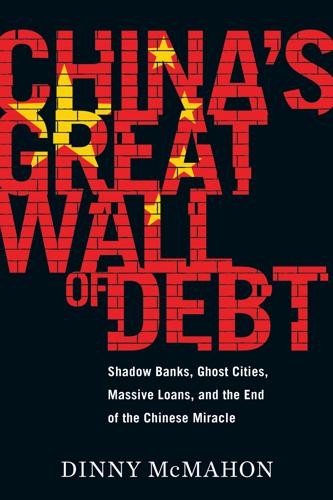
China's Great Wall of Debt: Shadow Banks, Ghost Cities, Massive Loans, and the End of the Chinese Miracle
by
Dinny McMahon
Published 13 Mar 2018
early in 2015: “李铁谈新城新区建设六大问题 称政府不了解城市化发展规划” [Li Tie discusses the 6 biggest problems facing new city and new districts, argues that the government fails to understand urbanization development plan], Caijing, January 19, 2015, http://economy.caijing.com.cn/20150119/3802042.shtml. 240,000 breaks a year: Whitford Remer, “A Big WIIN for Water Resources,” 2017 Infrastructure Report Card, American Society of Civil Engineers, December 15, 2016, http://www.infrastructurereportcard.org/a/#p/overview/executive-summary. from crumbling: Andrew Flowers, “Why We Still Can’t Afford to Fix America’s Broken Infrastructure,” FiveThirtyEight, June 3, 2014, http://fivethirtyeight.com/features/why-we-still-cant-afford-to-fix-americas-broken-infrastructure/.

The New Class Conflict
by
Joel Kotkin
Published 31 Aug 2014
Bret Swanson, “Zero GDP Reading Exposes the Real Deficit—Economic Growth,” Maximum Entropy, February 1, 2013, http://www.bretswanson.com/index.php/2013/02/zero-gdp-reading-exposes-the-real-deficit-%E2%80%93-economic-growth. 59. Walter Russell Mead et al., “The Blue Model Needs Wall Street to Survive,” American Interest, October 25, 2013, http://www.the-american-interest.com/blog/2013/10/25/the-blue-model-needs-wall-street-to-survive. 60. American Society of Civil Engineers, “2013 Report Card for America’s Infrastructure,” http://www.infrastructurereportcard.org. 61. Carl DeMaio, “Revoking the Federal Free Pass on Pensions,” Wall Street Journal, February 6, 2013; U.S. Department of the Treasury, “A New Economic Analysis of Infrastructure Investment,” report, March 23, 2012, http://www.treasury.gov/resource-center/economic-policy/Documents/20120323InfrastructureReport.pdf. 62.

A Poison Like No Other: How Microplastics Corrupted Our Planet and Our Bodies
by
Matt Simon
Published 24 Jun 2022
“Occurrence, Identification and Removal of Microplastic Particles and Fibers in Conventional Activated Sludge Process and Advanced MBR Technology.” Water Research 133:236–46. https://doi.org/10.1016/j.watres.2018 .01.049. Simon, Matt. 2021. “People Should Drink Way More Recycled Wastewater.” Wired. https://www.wired.com/story/people-should-drink-way -more-recycled-wastewater/. American Society of Civil Engineers. 2021. “Report Card for America’s Infrastructure: Wastewater.” https://infrastructurereportcard.org/cat -item/wastewater/. Packard, Vance. 2011. The Waste Makers. New York: Ig Publishing. REI. 2022. “What Is Organically Grown Cotton?” https://www.rei .com/learn/expert-advice/organically-grown-cotton.html.

Growth: From Microorganisms to Megacities
by
Vaclav Smil
Published 23 Sep 2019
In: The Rate and Direction of Inventive Activity: Economic and Social Factors, Princeton University Press, pp. 609–626. Asao, S., et al. 2015. Variation in foliar respiration and wood CO2 efflux rates among species and canopy layers in a wet tropical forest. Tree Physiology 35:148–159. ASCE (American Society of Civil Engineers). 2017. 2017 Report Card for America’s Infrastructure. https://www.infrastructurereportcard.org/wp-content/uploads/2016/10/2017-Infrastructure-Report-Card.pdf. Ashby, T. 1935. The Aqueducts of Ancient Rome. Oxford: Oxford University Press. ASME (American Society of Mechanical Engineers). 1980. The Pioneer Zephyr. https://www.asme.org/wwwasmeorg/media/ResourceFiles/AboutASME/Who%20We%20Are/Engineering%20History/Landmarks/58-Pioneer-Zephyr-1934.pdf.
…
During the second decade of the 21st century, many large Chinese municipalities are expected to add as much new residential building area as the total stock in many smaller-sized European countries, with Beijing adding more than Switzerland and Chengdu more than Sweden (EIU 2011). Infrastructures Societies have usually had much better success in building the essential infrastructures than maintaining them, and regular American assessments clearly demonstrate that chronic shortcoming. In 2017 the biennial Infrastructure Report Card published by the American Society of Civil Engineers awarded D+ as the overall grade, with individual categories ranging from B for railroads to D for drinking water, inland waterways, levees, and roads, and D− for public transit (ASCE 2017). This deficit is, of course, partly a function of the enormous cumulative extent of modern infrastructures and I will indicate some of their growth trajectories in societies with the requisite statistics.
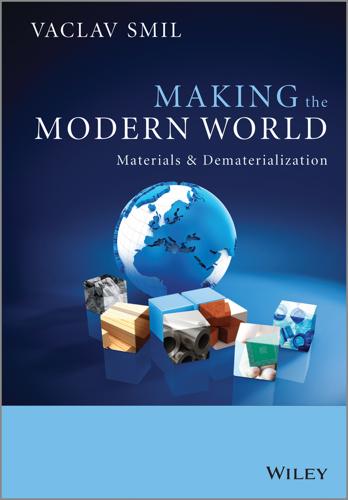
Making the Modern World: Materials and Dematerialization
by
Vaclav Smil
Published 16 Dec 2013
APA (2013) Concrete Forming: Design/Construction Guide, http://www.g-lumber.com/pdf/APA-Concrete-Formwork.pdf (accessed 19 June 2013). Apple (2012) Apple Introduces iPhone 5, http://www.apple.com/pr/library/2012/09/12Apple-Introduces-iPhone-5.html (accessed 22 May 2013). ASCE (American Society of Civil Engineers) (2013) 2013 Report Card for America's Infrastructure, http://www.infrastructurereportcard.org/a/#p/home (accessed 22 May 2013). Atsushi, U. (1995) The riddle of Japan's quakeproof pagodas. Japan Echo, Spring: 70–77. Atterbury, P. (ed.) (1982) The History of Porcelain, Morrow, New York. Austin, P. (2010) Reducing Energy Consumption in Paper Making Using Advanced Process Control and Optimisation, http://www.lcmp.eng.cam.ac.uk/wp-content/uploads/ Reducing-Energy-Consumption-in-Paper-Making-using-APC-and-Optimisation.pdf (accessed 22 May 2013).
…
Because maintenance and repair of deteriorating concrete have been inadequate, the future replacement costs of the material will run into trillions of dollars. To this should be added the disposal costs of the removed concrete: some concrete structures have been recycled but the separation of the concrete and reinforcing metal is expensive. The latest report card on the quality of American infrastructure gives poor to very poor grades to all sectors where concrete is the dominant structural material: bridges fared relatively well with C+, dams, schools, roads, aviation, public transit, and waste water treatment facilities got D, and levees and inland waterways received D-, for an overall average grade of D+, with an estimated investment of at least $3.6 trillion needed by 2020 in order to prevent further deterioration (ASCE, 2013).
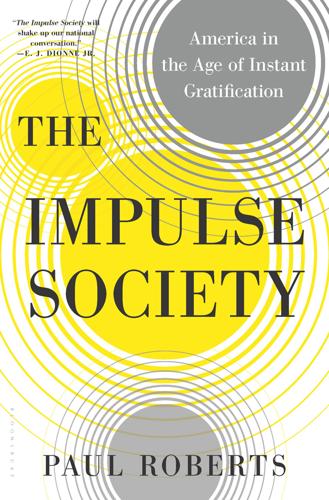
The Impulse Society: America in the Age of Instant Gratification
by
Paul Roberts
Published 1 Sep 2014
Chris Myers, “Conservatism and Campaign Finance Reform: The Two Aren’t Mutually Exclusive,” RedState, April 24, 2012, http://www.redstate.com/clmyers/2013/04/24/conservatism-and-campaign-finance-reform/. 24. David Brooks, “The Opportunity Coalition,” The New York Times, Jan 30, 2014. 25. “2013 Report Card for America’s Infrastructure,” American Society of Civil Engineers, http://www.infrastructurereportcard.org/. 26. In Robert Frank, The Darmn Economy: Liberty, Competition, and Common Good. 27. Brooks, “The Opportunity Coalition.” Footnotes Chapter 1 * Traffic fatalities in the 1920s were about seventeen times higher, per mile traveled, than today
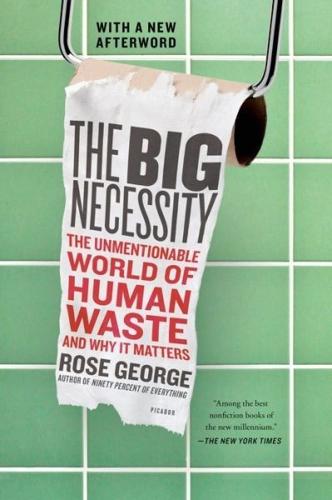
The Big Necessity: The Unmentionable World of Human Waste and Why It Matters
by
Rose George
Published 13 Oct 2008
It was always anticipated that the city would be able to catch up, but that was sixty years ago.” Greeley says his sewers are also in quite good condition, as they are regularly sprayed with concrete, which helps prevent wear and tear. That’s not to say that the DEP couldn’t do with more money for upgrades. The American Society of Civil Engineers grades the nation’s infrastructure every few years. In 2000, wastewater infrastructure got a D. By 2005, it was a D-minus. In 2000, the U.S. Environmental Protection Agency estimated that a quarter of the nation’s sewer pipes were in poor or very poor condition. By 2020, the proportion of crumbling, dangerous sewer pipes will be 50 percent.
…
Sewerage undertakers House of Commons Committee of Public Accounts, Out of Sight—Not Out of Mind, Ev. 2. Bonuses totaling £1.26 million Martin Horwood MP, Parliamentary Debates, Westminster Hall, June 27, 2006. One of the most unpleasant events House of Commons Committee of Public Accounts, “Out of Sight—Not Out of Mind,” Ev. 2. D minus American Society for Civil Engineers, “Report Card for America’s Infrastructure 2005,” http://www.asce.org/reportcard. Crumbling, dangerous sewer pipes NRDC, “Swimming in Sewage,” p. 23. 2,175 Olympic-sized swimming pools David Hsu, “Sustainable New York City” (New York: Design Trust for Public Space and New York City Office for Environmental Coordination, 2006), p. 21. 1.46 trillion gallons U.S.
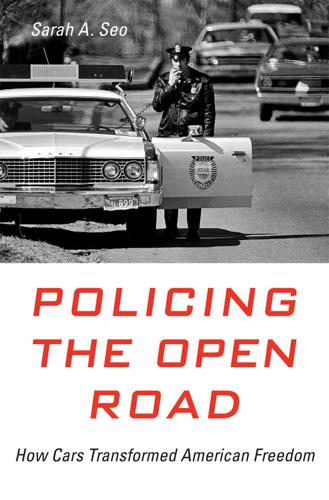
Policing the Open Road
by
Sarah A. Seo
Amsterdam, “The Void-for-Vagueness Doctrine in the Supreme Court,” University of Pennsylvania Law Review 109, no. 1 (1960): 67–116; David Wolitz, “Herbert Wechsler, Legal Process, and the Jurisprudential Roots of the Model Penal Code,” Tulsa Law Review 51, no. 3 (2016): 633–687. CHAPTER 1 . A Mystery of Traffic 1. Francis V. Greene, “An Account of Some Observations of Street Traffic,” Transactions of the American Society of Civil Engineers 15 (February 1886): 123–138; Clay McShane and Joel A. Tarr, The Horse in the City: Living Machines in the Nineteenth Century (Baltimore: Johns Hopkins University Press, 2007), 54; J. E. Wright, “Automobiles Transforming City Thoroughfares,” TAC 4, no. 3 (March 1916): 121; Herbert Hoover, “Fair Automobile Safety Regulation,” Insurance Field 49, no. 16-A (April 17, 1924): 5; G.
…
Police departments, in cooperation with various civic organizations, formed “public safety committees” or “vigilance committees” whose members, sometimes called “the Vigilantes,” would inform on traffic violators. The specifics of Northern California’s program were typical. Appointed citizens, upon observing a violation, would fill out a report card and send it to the committee, which would then mail a letter to the offender, “calling the reported violation to his attention, pointing out the increasing number of traffic accidents, and urging his co-operation in their reduction.” A second report would trigger “a more pointed communication,” and a third report would finally prompt police action.
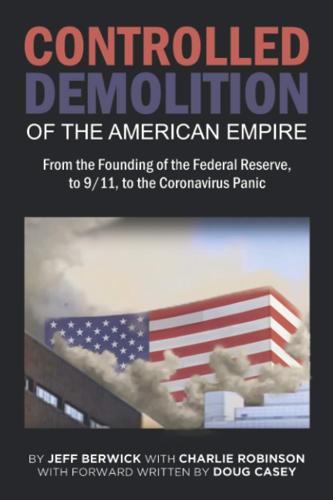
The Controlled Demolition of the American Empire
by
Jeff Berwick
and
Charlie Robinson
Published 14 Apr 2020
Any functional lie is wrapped in mostly truth but dipped in a hard coating of lies to send the general public down the wrong path. A path that, most likely, is disintegrating because of poor building standards and non-existent maintenance. Crumbling Infrastructure The 2017 Infrastructure Report Card by the American Society of Civil Engineers should be a wake-up call to the country because the grades were terrible and the problems are not getting any better. They took a look at a variety of industries and assigned an A through F grade to the different aspects of the infrastructure of America. The results were horrifying but not surprising as almost all of these areas are top-down, centrally planned, communist-style Aviation: D Airports in the United States handle two million passengers daily, with growing congestion expected to continue.

Capitalism in America: A History
by
Adrian Wooldridge
and
Alan Greenspan
Published 15 Oct 2018
The roads, particularly in the Northeast and California, are full of potholes. New York’s John F. Kennedy International Airport is an embarrassing slum compared with, say, Shanghai’s Pudong International Airport. America’s trains are slow coaches compared with China’s bullet trains. The 2017 Report Card from the American Society of Civil Engineers puts some numbers to this general impression. The average age of the country’s 90,000 dams is fifty-six years. Thanks to the growing density of the population, the number of “high hazard” dams has risen to at least 15,500. There are an estimated 240,000 water main breaks a year, wasting more than 2 trillion gallons of treated water.

Your Computer Is on Fire
by
Thomas S. Mullaney
,
Benjamin Peters
,
Mar Hicks
and
Kavita Philip
Published 9 Mar 2021
Andrew Russell and Lee Vinsel, “Hail the Maintainers: Capitalism Excels at Innovation but Is Failing at Maintenance, and for Most Lives It Is Maintenance That Matters More” (April 7, 2016), https://aeon.co/essays/innovation-is-overvalued-maintenance-often-matters-more. 7. Bowker and Star, Sorting Things Out. 8. American Society of Civil Engineers, “2013 Report Card for America’s Infrastructure” (2014), accessed February 1, 2019, http://2013.infrastructurereportcard.org/. 9. Ingo Braun, “Geflügelte Saurier: Zur Intersystemische Vernetzung Grosser Technische Netze,” in Technik Ohne Grenzen, ed. Ingo Braun and Bernward Joerges (Frankfurt am Main: Suhrkamp, 1994). 10.

Global Catastrophic Risks
by
Nick Bostrom
and
Milan M. Cirkovic
Published 2 Jul 2008
Risk filtering, ranking, and Risk Anal., 22(2) , management framework using hierarchical holographic modeling. 383-397. Kaplan, S. (1991). The general theory of quantitative risk assessment. In Haimes, Y., Moser, D . , and Stakhiv, E. (eds.), Risk-based Decision Making in Water Resources V, pp. 1 1-39 (New York: American Society of Civil Engineers). Systems-based risk analysis 163 (1993). The general theory of quantitative risk assessment - its role i n the Proc. APHIS/NAPPO Int. Workshop !dent. Assess. Manag. Risks Exotic Agric. Pests, 1 1 (1 ) , 1 23-126. Kaplan, S. (1996). An Introduction to TRTZ, The Russian Theory of Inventive Problem Solving (Southfield, M I : Ideation I nternational) .
…
print=true] on August 20, 2006. 444 Global catastrophic risks Bunn, M . , Holdren, J.P., and Wier, A. (2002). Securing Nuclear Weapons and Materials: Seven Steps for Immediate Action (Cambridge, MA: Project on Managing the Atom, Harvard University). Bunn, M., Holdren, J.P., and Wier, A. (2003). Controlling Nuclear Warheads and Materials: A Report Card and Action Plan (Cambridge, MA: Project on Managing the Atom, Harvard University). Bunn, M., Holdren, J.P., and Wier, A. (2004). Securing the Bomb: An Agenda for Action (Cambridge, MA: Project on Managing the Atom, Harvard University) . Calhoun, L.G. and Tedeschi, R.G. ( 1 998) . Posttraumatic growth: future directions.

The power broker : Robert Moses and the fall of New York
by
Caro, Robert A
Published 14 Apr 1975
On that morning, it was jammed bumper to bumper for more than three miles. Traffic experts could not understand where those cars had come from. The other Long Island parkways, after all, were just as jammed as ever. Four months after the Triborough Bridge opened, Othmar Ammann gave a speech on its operation to the American Society of Civil Engineers. In it, Triborough's chief engineer announced that traffic on the span was running considerably ahead of estimates. The opening of a bridge was big news, but its operation was not. Most newspapers did not even bother to send a reporter to cover the speech. The Times did, and Ammann spoke with him after the meeting, and provided him with a further bit of information.
…
Instead of an Ivy League university, he wanted to go to little Chapel Hill College in North Carolina; Jane was appalled, but Moses told her, "Oh, let the boy go where he wants." When his first report card came back with straight C's, he said, with a grin, "Well, at least he's consistent." In 1967, as a senior at college, Christopher Collins' attitude changed. His report card came back all A's. "I don't think RM was any prouder of the Verrazano Bridge than he was of that report card," Sid Shapiro says. When Chris said that he wanted to study law at Stanford, Moses helped him get in. On December 11, 1968, driving home to Long Island from California as a passenger in a car driven by a Stanford friend, Christopher Collins, twenty-one, was killed when the car veered off the road and smashed into a concrete culvert.
…
Within a few months, however, the students began to notice another quality in Moses, a quality which became more apparent almost day by day. Blazing behind the big gray eyes, they now saw, was a furious impatience. Within months after entering the Training School, Moses made clear that he felt he had learned all it had to offer. He was irritated by the report cards, by the weekly conferences with his Bureau advisers, by all the aspects of school life that made him remember that it was a school and that he was still, at the age of twenty-five, a student. In particular, he resented the legwork. The Training School men were required to summarize the results of their investigations in memos that had to be written as if they were official Bureau reports but that would actually be seen only by the Bureau men who were writing the real reports that would be published.
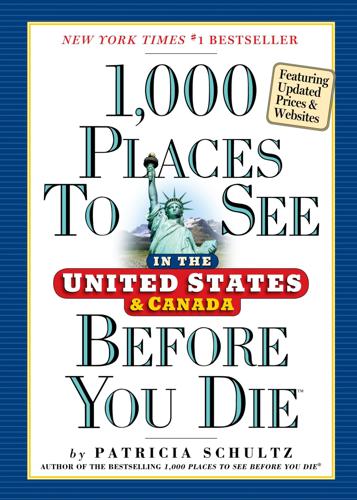
1,000 Places to See in the United States and Canada Before You Die, Updated Ed.
by
Patricia Schultz
Published 13 May 2007
Carved out of sand dunes known as the “outside lands” when it was conceived in 1870, Golden Gate Park is a long, rectangular 1,017-acre urban oasis of forests, meadows, foot-paths and, yes, roads, though many are closed to traffic on Sundays and holidays, when cyclists, walkers, and in-line skaters own the park’s thoroughfares with gleeful abandon. The American Society of Civil Engineers proclaimed the Golden Gate Bridge to be one of the modern wonders of the world. A seemingly endless number of destinations lie within the park, like the magnificent domed Conservatory of Flowers, the radiant crystal palace from 1878 that was modeled on London’s Kew Gardens. It is the oldest building in the park and the last remaining wood-frame conservatory in the country, with an astounding array of orchids.
…
Today Springwood has 290 acres, with walking trails and America’s first presidential library, which Roosevelt designed himself in Dutch Colonial style and actually used while he was president. By donating his papers to it, Roosevelt established the precedent for public ownership of presidential papers, which soon became federal law. Highlights include an excellent documentary film, report cards from Groton and Harvard (bearing few A’s), and the desk FDR used during his four successive terms of office. The Rose Garden is the location of the Roosevelts’ simple graves and the tiny tombstone of their beloved Scottish terrier, Fala. Originally a furniture workshop that Eleanor started in 1926 to teach manufacturing skills to underemployed farmworkers, nearby Val-Kill became the exceedingly modest home Eleanor came to prefer, down to the Colonial reproduction furniture, knotty pine paneling and dimestore tumblers.
…
The permanent collection contains more than 100,000 artifacts in dizzying variety—thousands of instruments and stage costumes from the likes of Jimi Hendrix and Iggy Pop, naturally, but also loads of less obvious items from quirky to poignant, such as Jim Morrison’s Cub Scout uniform and Elvis Presley’s draft card. Janis Joplin’s 1965 Porsche and ZZ Top’s 1934 Ford coupe, the Eliminator, are on display, and there are even school report cards for John Lennon, James Taylor, the Everly Brothers, and legendary drummer Keith Moon of The Who (“shows promise in music”). Cleveland is hardly the hub of the music industry, and indeed the hall’s highest-profile event, the annual induction ceremony, usually takes place in New York. But it’s rich in rock history: It was in Cleveland that radio disc jockey Alan Freed, who is credited with coining the term “rock and roll,” broke racial boundaries with his broadcasts and put on the country’s first rock concert, the original Moondog Coronation Ball in 1952.